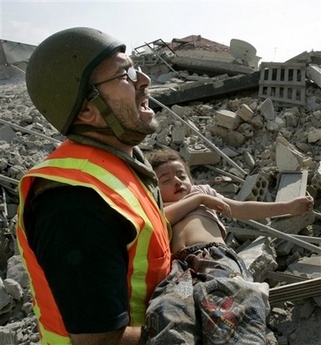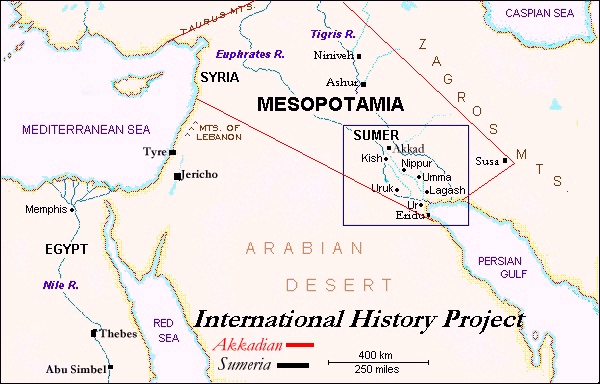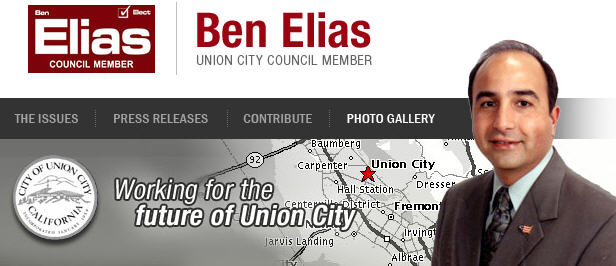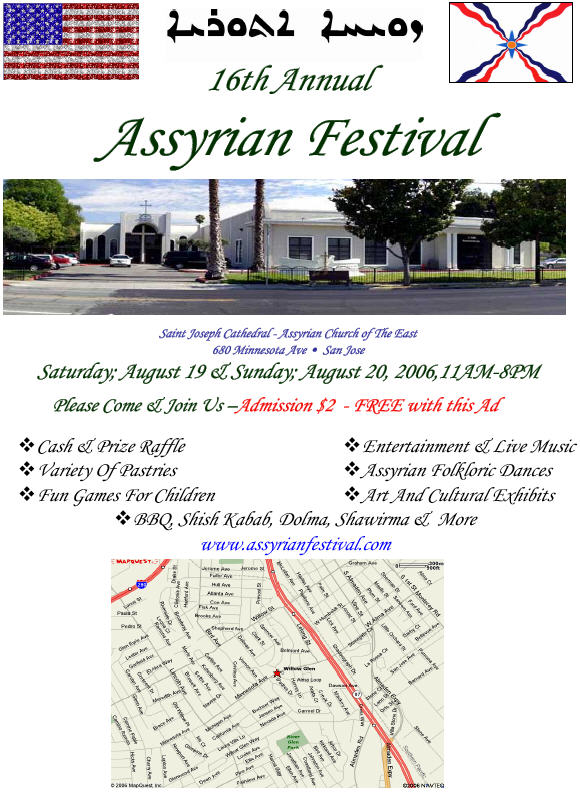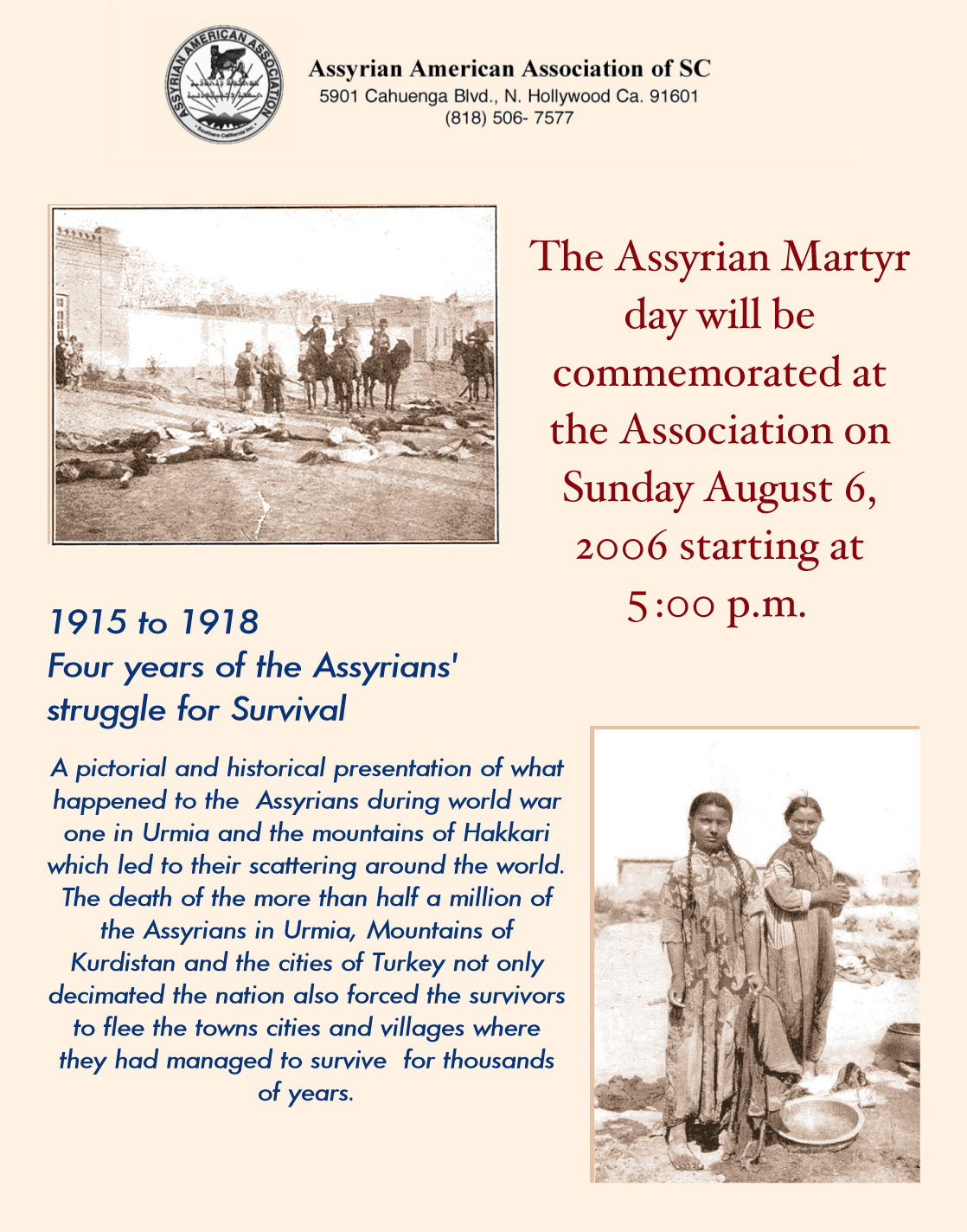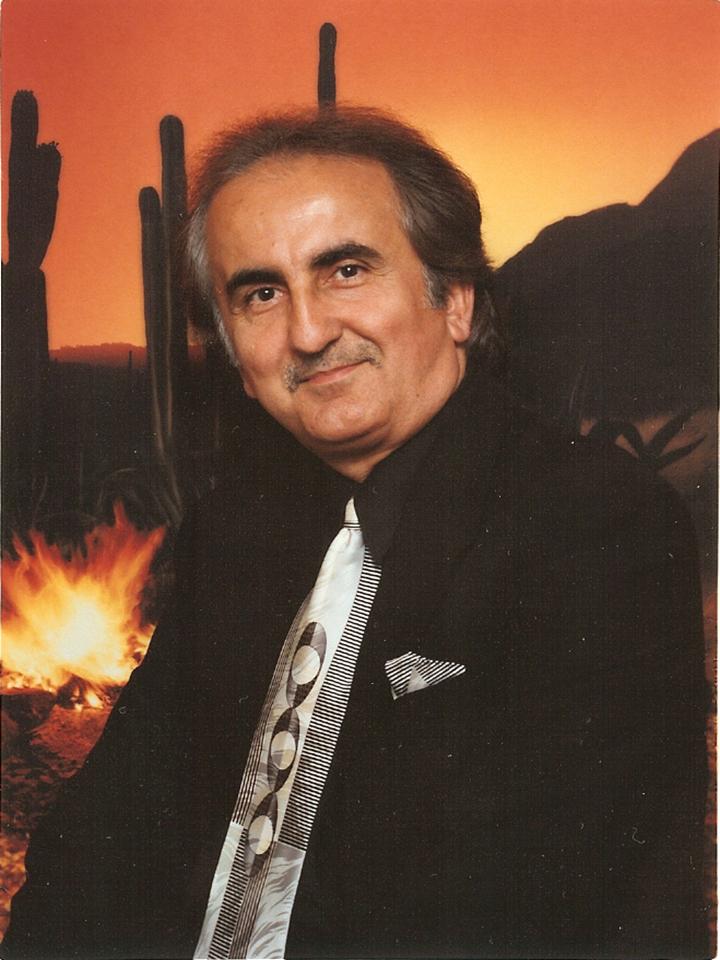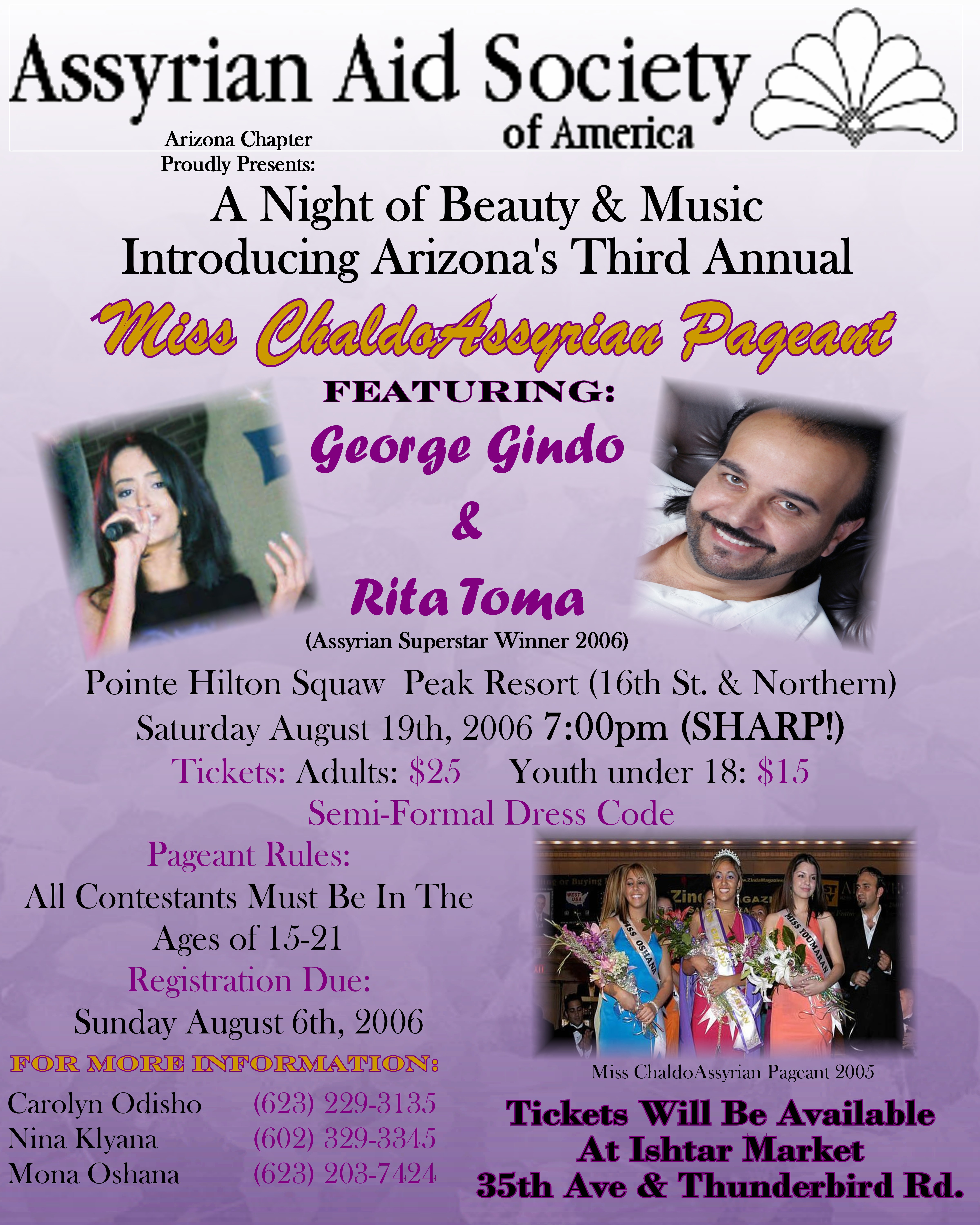|
Volume XII |
|
|

1- 8 6 6 - M Y Z I N D A
|
1-866-699-4632 | Fax 1-415-358-4778 | zcrew@zindamagazine.com
1700 Pennsylvania Avenue. NW Suite 400 Washington, DC 20006 U.S.A. |
|
|

|
Fearing reprisal from Islamic and Arab governments and masses, Assyrian Church and Parliamentary leaders
in the Middle East swiftly condemn Israel’s attacks
on Lebanon. |
Click on Blue Links in the left column to jump to that section within this issue. Most blue links are hyperlinked to other sections or URLs. |
|
|
Will Israel Create an Allied Kurdish State in the Middle East? |
Augin Kurt |
|
|
Samuel Huntington, Enough Prattling! |
Ashur Giwargis |
|
|
Assyrian Clerics and Leaders
Condemn Israeli Attacks
Pamphlets Warn Charistians in Dora and Mashtal Districts
Assyrian Man Remains in Arab Prison |
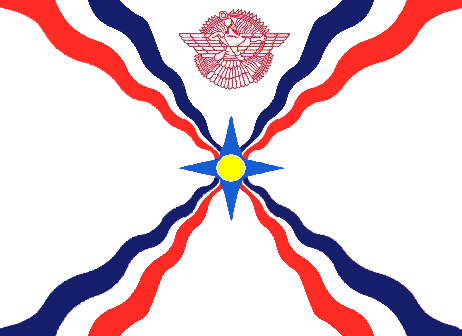 |
|
|
Third Man Arrested in Shooting of Assyrian Man in Sydney
U.S. Helps Recover Statue and Gives It Back to Iraqis
Dutch Police Hand over Looted Artifacts to Iraq
Christian Clerics Ask Tehran to Ban Da Vinci Code in Iran |
|
|
|
|
|
What We Need is More ROSIES
Assyrian Church of the East Youth Ministry
Our Precious Church
Still A Bishop
Adam Haddad’s Fear of the Tour of Canada
Assyrian Aid Society Hosts its First Community Garage Sale |
Click to Learn More :
ZINDA CALENDAR
ZINDA ARCHIVES |
|
|
August 7th Commemorations in Modesto
Australian Census 2006 |
|
|
|
Ankara’s Rhetoric and Assyrian Pavlovian Response
The Road to Assyrian Autonomy in Iraq
The End of Christianity in Iraq
The Great Assyrian Exodus of 1918
El Cajon Leads Region in Tweaked, White Trash Gentrification |
Nineb Lamasu
Sargon Sapper
Glen Chancy
Eddie S. G. Beth Benyamin
Brian Swarthmore |
|
|
Aramaic-English Bible Translation Draws Criticism |
Maria Arita |
|
Zinda Says
An Editorial by Wilfred Bet-Alkhas
|
Will Israel Create an Allied Kurdish State in the Middle East?
A Guest Editorial
Augin Kurt
Editor
Assyrian Radio Program, Qolo (The Voice)
Former editor-in-chief
Huyodo magazine
The debate on the future of the Middle East and the intentions of the different actors in the area is under way on Assyrian sites like Zindamagazine.com. One of the debaters is Mariam S. Shimoun from Canada with her interesting contributions such as “If You Were Barzani” and lately “The Turkey Factor”. According to Mariam S. Shimoun the Turks will, as soon as the Americans withdraw from Iraq, throw themselves into the game in order to prevent the creation of a Kurdish state. That’s when the Turks will recognize the value of loyal allies such as the Assyrians. “In the Middle East – as the British once learned – Assyrians make the most trustworthy allies”, she concludes.
Certainly this analysis has its strong points, that is if there will remain any Assyrians to bet on when that opportunity comes. But this argument may fall short if Israel has decided to create a Kurdish ally as a sort of prolonged arm towards Arabic enemies. In an article we published in the magazine of Huyodo on this matter in the year 2000, a Jewish professor urged Israel during a lecture to back non-Arabic minorities in the Middle East. The Kurds are a non Arabic minority. Is it the fruits of this strategy we are witnessing today, as Israel has tight contacts with KRG and is, for example, training fighter pilots for a future Kurdish state?
Mariam Shimoun seems to be a very clear-sighted person and her article “If you were Barzani” (Zinda April 2006) is one of the best analytical pieces I have read on our Assyrian situation. The method of putting oneself in the shoes of the counterpart and make arguments from his point of view is pedagogic and effective from a reader’s point of view. What would you do if you were the Kurdish leader Mazoud Barzani?
But the point of this reasoning is not so much about how Barzani thinks and acts, but rather about what we as Assyrians are doing in a time when Barzani and other Kurdish leaders are creating division among the Assyrians in order to dominate and rule.
Mariam Shimouns answer to this question is a bitter statement: instead of realizing the great danger with Barzani's actions towards the existence of our nation, we Assyrians are keeping ourselves busy with internal conflicts about which priest is the favourite, which name we should adopt and which group knows best. In other words, we are sticking our heads in the sand and we can’t or don’t want to realize how serious the situation is.
What are the reasons for this? Are we as a people less aware of our national identity and its value? Or are we aware enough but prefer the interests of the own group on top of all-embracing Assyrian interests?
I believe it is a combination of lack of knowledge and opportune selfishness.
This is of course not a specifically Assyrian characteristic. Many other nations in the same situation could experience the same. The difference lies in the fact that other groups have developed further and established a political force that can control the situation and unite the forces when it comes to the interests of the nation. Our religious or secular leaders may ally themselves with anyone without having to face any consequences. It is this force that is missing among us Assyrians. We have not learned from the experiences of neighbours and minorities in the same situation. The attempts made during the last decades have been annihilated by mighty interests, among other things through infiltration and the planting of internal conflicts. The Assyrian movement that began in Sweden 30 years ago was such an attempt which unfortunately was smothered in its infancy. Fruitless conflicts regarding the name issue are still an obstacle in the way, for example when we are to concur on something as simple as the inscription on a remembrance monument in the city of Södertälje for the Sayfo victims.
To return to the initial question, in the near future we will see whether any importance will be attached to the Assyrians at all when the new Middle East is created. Two things are important to keep in mind;
1: The existence of Israel and its future allies is more important than the existence of the indigenous populations of the Middle East such as the Assyrians. The USA’s economic interests are secondary in this respect. The reason, first and foremost, is the strong position of the Jewish groups in the USA.
2: The Assyrians themselves are not ready to seize the opportunity. We stick to our childish games around the priests and clans and forget that the train is about to leave. If and when the next opportunity comes, there might be no more Assyrians in Assyria.
This may sound darkly pessimistic, but one cannot disregard reality. Both our religion and our ethnicity are, unfortunately, factors standing in our way for continued existence in the Middle East. We find ourselves in a sea of hostile-minded Muslims who see us as the blind followers of the west, at the same time as the western powers ignore that we are Christians. Some mighty powers also consider our ethnic origins as a threat against their own ambitions.
We certainly can rely on the mercy of God, but we must be worthy of such a mercy. After all, history shows us that God bets on the strong ones who seize his given possibilities. Until now we have not learned even as much from this history.
 Click Image to Enter
Click Image to Enter |
A Lamassu Productions Project
|
|
|
|
The Lighthouse
Feature Article
|
|
Samuel Huntington, Enough Prattling!
Ashur Giwargis
Beirut
Translation from Arabic by Mary Challita
"If demography is destiny, then populace movements are the movers of history" (Samuel Huntington)*
Immigration is a populace movement which moves history, but standing against it is an opposite populace movement which confirms history, however, it is created by the political institutions representing oppressed peoples. As such the two are populace movements which control destiny and not vice versa. One of the main causes of migration is distrusting the surroundings, but the main reasons for the emergence of a reverse movement is the lack of self-esteem in some Assyrian political parties as well as their populace bases. This is one of the negative elements which has compiled in the contemporary Assyrian self of a large section of the Assyrian people because of continuous suffering, the lack of organization and the non-existence of not only a long term strategy but also a near term one...
 |
While I was reading Professor Huntington's book "The Clash of Civilizations and the Remaking of World Order", I went to sleep thinking about the above sentence while my mind was repeating the memories of a rural song which I had heard during the day on Ashur T.V. about an Assyrian village, recalling the images of its elderly and children awaiting for their relatives abroad to arrange for visas to the U.S. and Europe. My imagination took me away for a moment through the profound memories of history of the mass exodus of the Assyrian people changing its demographic reality since 612 B.C. passing through the massacres committed by Tamerlane, Al-afshar, the Ottomans, the Kurds, the Arabs and the Persians, leading to the conspiracies of the Russians, the French, the English and the endurance of the Assyrian people before all these during the period of the pre-establishment of political parties. Following this ugly round, my imagination went to the stage of infamy, post the 1933 massacres where I saw the "experienced" and "struggling" Assyrian political parties passing bowing their heads in shame before Huntington while raising them before the naive of their followers ... I Compared their ambitions with their pretext of " bitter demographic realities" then deep inside I felt sorry for Huntington, who remains despite his knowledge and education deprived from being a pupil in the "Syriac" schools so that he could have learned how to be in the future an educated yet a dispirited man, a hypocrite politician striving in the homeland, and a defeated leader elected by the people ...
But at the same time I excused the "ignorant" Huntington because perhaps he doesn’t read the newspapers "Bahra", "Nishro", and "Quyaman" nor does he watch Ashur T.V. and he appears to be a dreamer away from "reality" ... Or that he had not been organized in defeated Assyrian political parties, nor had he learned the strategic, romantic purple thought, he didn't even know that all the demands made by some politicians who had plagued the Assyrian people and were (elected) by them, were to teach sewing, having ministerial seats, being members of parliament, being mayors, and restoring the "Kurdistani" lands to the "Christians of Kurdistan", planting apricot and apple trees within its boundaries, and an administrative area awaited eagerly by the "allies - enemies". Then teaching a language with a Greek made name and applying it to all the educational curricula, including the Kurdified history which is sealed and certified by the staff of Badrkhan, Simko and Barzani …
I insisted on enlightening Huntington and said: [These are the demands which are considered "fateful" by some of those “struggling” for which in the process hundreds of thousands of Assyrians perished over the centuries, leading to the present day martyrs whose martyrdom is proudly boasted by those “struggling” in order to win the satisfaction of the misled voter, while in the process they neglect the principles which these martyrs gave their lives for, in order to please a wretched Patriarch who has no control even on himself.
30% off List Price for
ZINDA READERS |
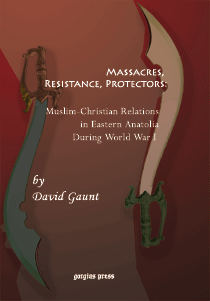 |
Click Bookcover to Order Your Copy |
In any event, we are not concerned with your theories, because our politicians are always engaged in the "struggle" and do not have time to attend conferences, or alliances neither to strengthen relations with the rest of the Assyrian parties, nor do they have time to publicize the Assyrian Cause and bring it before the governments of Iraq, the Diaspora, and their misguided 47,000, but in spite of their "struggle", they always fail in their defeated proposals and when some attempt to approach them, they can't understand them for they are "wisely experienced", while you and all those great political analysts such as yourself can't analyze their strategy because they lack the principles when it comes to claiming rights, and they are stateless in their affiliation when it comes to preserving the identity - whatever you call it - and often their "experience" resembles" the "boldness" of an artist when the press describes her as the "bold artist" being accustomed to undress before the public].
I went on talking to the 80 year old Huntington while he glanced at me behind his thick glasses under his broad forehead with his baldness shinning in the darkness of ignorance, I said:
Between the boldness of the artist and the experience of some Assyrian politicians, day after day despair crawls into the Assyrian society, while the Assyrian politician's exploits have surpassed the number of Ibn Battuta's trips [1], and his promises increased in their number surpassing those made by Joha [2] to his wife, all with the aim of raising funds and support to gain the electoral votes. In addition to the policy of "make a stand" in a heroic manner days before voting on the loathsome administrative law, signing it later and raising it proudly, while smiling in front of the local and global media, or days before the elections when the voters wouldn't read his political program which you failed to understand, or when he incited the masses of flesh and bones to demonstrate against a loathsome Constitution while they were ignorant of their own destiny, a Constitution with a silly-slapping embellishment written by the Kurdifiers of the Assyrian people in Nohadra and Arbil ... And tomorrow in Nineveh, and by the Islamizers of the Assyrian people in the camps of "Road to Quds" in Iran during the first Gulf War ... And tomorrow in Baghdad and other areas following the establishment of a "democratic free Iraq". After all this our “struggler” would himself bless the Constitution and begins with his funny percentage calculations, thus one time the result of his calculations would be that we gained 85% of our rights and later 25%, then he would tackle the matter of his seat which in his point of view has become the issue and the main objective "in order to gain our rights" (the petty rights that he didn't and will not introduce) thus his shameful "experience" would emerge along with the contradictions of his past stands which have transformed without his knowledge into stupid spiders entangling him into their worn-out web, attempting in vain to free himself blaming "those who are enjoying life's pleasures abroad" forgetting who led him to his position, or he would blame some prattling clergymen forgetting that they were his political advisors at the Assyrian identity banquets, or he would blame some steadfast clergymen forgetting that they were the ones who refused to change the identity which his Movement, Organization or party carry its name, this identity for which the martyrs gave their lives for and he himself boasts their martyrdom during the fund raising parties ...
At this point my explanation of the contemporary Assyrian national movement was finished, but I learned that Huntington who is one of the greatest modern time lecturers did not understand a single thing I had said, so I repeatedly assured him that it wasn't his fault so that he wouldn't suffer from an inferiority complex. I said:
Huntington, I don't blame you for your poor understanding of the Assyrian national movement; it is a unique movement where its objectives have been unsteady and its assessments in the fields of thinking went on clashing, contradicting and playing on the strings of personal interests, while our popular bases have become the shouters of slogans which they do not understand and our educated ones have turned to sellers of writings. Thus our politicians become larger just as the sea leeches do with the accumulation of filth, then the prestige of some of our former Arabist clergymen increases turning them into prominent politicians shaking the seas with their leeches. As for demography as you have kindly defined it in your phrase, it has remained a destiny, however our popular movement was and still is migration in the lexicon of history but it is "tourism" [3] in the dictionary of Assyrian political struggle ... Open that dictionary read it, learn, and don't argue with me... and enough prattling.
I woke up frightened from my rave-like nightmarish lecture to the sound of the explosion of a "realistic" Israeli missile desperately attempting to change another demographic picture. I was heavily sweating due to my enthusiasm while I reprimanded my student who was unable to understand "the Assyrian struggle" ... In my moment of awakening I realized that if I were to continue reflecting upon reading every realistic and meaningful sentence and if I was to compare it with the procession of the Assyrian national movement and its pioneers today, then I would spend my entire life reflecting in pain...
- Abu Abdullah Muhammad Ibn Battuta ; a famous Arab traveler (1325-1369 A.D) from Morocco
- Joha, a famous Arab comic personality in the Arab literature
- A statement of Mr. Younadam Kanna in 28/Aug/2004 after the attacks against 6 churches, when he said the Assyrians who left to Turkey, Syria, and Jordan are just tourists and they will be back at the end of summer.
 Prof. Samuel Huntington is a professor of Political Science at Harvard University, and director of the John Olin Institute for Strategic Studies. Mr. Ashur Giwargis is a regular contributor to Zinda Magazine and lives in Beirut, Lebanon. Under constant Israeli airstrikes, Mr. Giwargis continues to enlighten his readers with criticisms of contemporary Assyrian national movements. Prof. Samuel Huntington is a professor of Political Science at Harvard University, and director of the John Olin Institute for Strategic Studies. Mr. Ashur Giwargis is a regular contributor to Zinda Magazine and lives in Beirut, Lebanon. Under constant Israeli airstrikes, Mr. Giwargis continues to enlighten his readers with criticisms of contemporary Assyrian national movements.
|
|
Good Morning Assyria
News From the Homeland
|
Assyrian Clerics and Leaders in Syria, Turkey & Iran
Condemn Israeli Attacks
Courtesy of Cihan News Agency, Zaman,
30 July 2006
(ZNDA: Ankara & Tehran) The Assyrian Christian community in Turkey has condemned the ongoing Israeli aggression against Lebanon, criticizing Israel for massacring innocent people.
Christian Assyrian Church priest Gabriel Akyuz labeled the Israeli attacks as savagery. Akyuz said that the attacks were not justified. "The United Nations should immediately call for a ceasefire in Lebanon," he said.
"We, as men of religion, can only pray for peace," Akyuz added.
Father Akyuz said that thousands of Assyrian in Lebanon were living in fear due to the Israeli attacks. "Some Assyrians who fled from Beirut found shelter with the Assyrian community in Antakya."
"We are all members of the same family; there is no discrimination among Muslims, Christians, Jews and Armenians. The war should be stopped."
According to the Syrian Arab News Agency Patriarch Agnatius Zaka I, Patriarch of the Syrian Orthodox Church, has also said that the international community and the international organizations have so far failed in taking firm and decisive position "to halt the Israeli unjust aggression on Lebanon."
In a statement to reporters Patriarch Iwaz stressed that the efforts of the protectors of Israel, on top of them the United States, have prevented the UN. Security Council from doing its job to protect the security of the peoples and to condemn aggression.
He expressed on behalf of the Syriac Orthodox unlimited solidarity with the brothers in Lebanon, demanding the international community to put an immediate end to the Israeli aggression.
Mor Iwaz expressed support for supporting the Lebanese national resistance which is defending the sovereignty and independence of Lebanon.
In Iran Mr. Yonatan Bet-Kolia, the representative of the Assyrians and Chaldeans in the Iranian Majlis (or Parliament) has written a letter to Pope Benedict XVI denouncing Israel’s attacks, a report released by the Majlis media department said last Tuesday.
Bet-Kolia, who is also the Secretary of the Assyrian Universal Alliance's Asia branch, called for efforts "to relieve the Lebanese nation from the Zionist assaults."
Mr. Bet-Kolia noted in his letter that: “Jesus Christ has said share your neighbor’s sorrow and pain… Today, the Zionist regime has launched barbaric attacks on Lebanon following the massacre it carried out in Gaza. By bombing a land which has suffered long years of war, Israel has caused insecurity, destruction and massacre in Lebanon."
“The carnage that Lebanon faces today has shed light on the brutal and inhumane image of a regime that had previously targeted the innocent and helpless nation of Palestine,” parts of the letter read.
Betkellia called on Pope Benedict XVI to stand up to the Israeli regime and to prevent it from destroying churches, mosques and other historical and holy sites in Lebanon.
Pamphlets Warn Charistians in Dora and Mashtal Districts
(ZNDA: Baghdad) According to reports from Baghdad, a series of pamphlets were distributed last week in that city's Dora District in which all residents were asked to evacuate their homes and leave Baghdad.
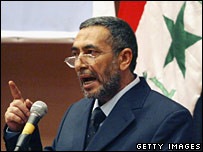 |
| Dr. Mashhadani's comments on al-Iraqiya raise some questions. |
Other pamphlets warned of an impending attacks on the Christian and Sunni families in the al-Mashtal quarters of the city and demanded that they evacuate their homes or face extermination.
According to baqofa.com, National Organization for Civil Society and Iraqis Rights issued a statement regarding the interview of Dr. Mahmoud al-Mashhadani, the speaker and head of the Iraqi National Assembly (parliament) on al-Iraqiyya Sat.
On 31 January 2006, al-Iraqiya Satellite Television broadcasted a film clip of an investigator questioning a terrorist whom along three other terrorists named Jamal, Sabah, and Firas kidnapped three women. The first was a Christian from Za'faraniyya. The three men raped her and then Jamal killed her. The second was a teacher, a Christian as well, from Diyala. She was raped and then Sabah killed her. The third was a Christian also and an employee at a clinic in al-Madaa'in (ancient Seleucia-Ctesiphon). She was raped as well and Jamal killed her after they raped her.
On 18 July 2006, al-Iraqiya broadcasted an interview with Dr. Mahmoud al-Mashhadani, where he addressed the issue of kidnapping his own sister Tayseer al-Mashhadani and her guards. Addressing the terrorists, Dr. Mahmoud al-Mashhadani stated: "Why kidnap this Muslim woman? Instead of Tayseer, why not kidnap Margaret or Jwan?"
Dr. Mashhadani's comment has since angered many Assyrian and human rights groups in Iraq demanding an explanation.
Assyrian Man Remains in Arab Prison
By Afram Barryakoub, reporting from Sweden
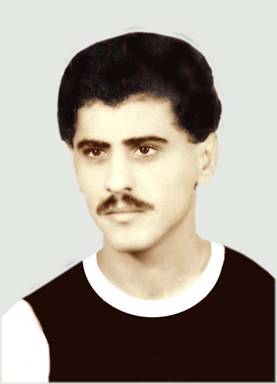 |
Despite the efforts of the Assyrian groups and the Swedish government, Mr. Yacoub Hanna Shamoun remains in the al-Saydnaya prison in Syria. |
(ZNDA: Stockholm) Despite several statements made by the European politicians for the release of Mr. Yacoub Hanna Shamoun, detained in the al-Saydnaya prison in Syria, the Syrian authorities have not made any contacts with the family or the Assyrian groups on the condition of Mr. Shamoun and his fate.
Mr. Shamoun has been detained in this prison for nearly 20 years (click here).
The Swedish Foreign Department was assigned to investigate the case of Mr Shamoun after MP Anneli Enochson spoke on the case. Until now, the Swedish embassy in Damascus has failed to raise the case with the Syrian authorities so far.
Ms Ewa Nilsson, First secretary of the Swedish embassy in Damascus aknowledges the situation saying that the information the embassy has recieved about the case is limited.
Ewa Nilsson says that a local MR-organisation reports to have known some information about Mr. Shamoun, but the organization's knowledge is limited to the information in the press release of the Assyrian Democratic Organization (click here).
The hope of seeing a quick release is now diminishing among Assyrians who are involved in the case. Groups and individuals interested in the release of Mr. Shamoun are preparing to lobby more intensely and for longer than expected time.
|
| |
|
News Digest
News From Around the World
|
|
Third Man Arrested in Shooting of Assyrian Man in Sydney
Courtesy of Fairfax Digital
17 July 2006
By
Dylan Welch
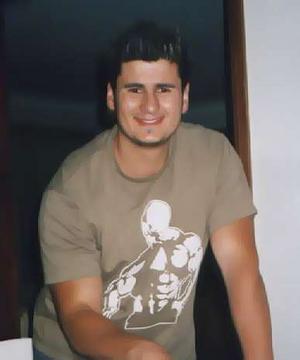 |
| Ashoor Audisho, an Assyrian DJ was gunned down in Sydney last April. |
(ZNDA: Sydney) Police have arrested a third man in relation to the shooting death of Ashoor Audisho in April.
Linard Shamouil, 20, faced Parramatta Local Court last week, charged with murder, and was refused bail.
Shamouil was arrested by Middle Eastern Organised Crime Squad detectives attached to Strike Force Fiford, established to investigate the shooting.
He was already in custody for other offences and appeared in Liverpool Local Court on video link on July 26.
Dilan Shaba, 19, of Edensor Park, and Steven David, 22, of Hinchinbrook, have already been charged with murder.
Both have been refused bail to face Sydney courts later this month.
Audisho, 21, from Greenfield Park in Sydney's south-west, was shot three times in the back on April 9 after being confronted by three men in Hamilton Road, Fairfield West.
He had just left an Assyrian community club, where he had worked a shift as a DJ.
He later died at Liverpool Hospital.
U.S. Helps Recover Statue and Gives It Back to Iraqis
Courtesy of the New York Times
26 July 2006
By Barry Meier & James Glanz
(ZNDA: Baghdad) One of the most important treasures looted in the ransacking of Iraq’s national museum three years ago has been recovered in a clandestine operation involving the United States government and was turned over to Iraqi officials in Washington yesterday.
The piece, a headless stone statue of the Sumerian king Entemena of Lagash, was stolen in the days after the fall of Baghdad. In the wake of the looting, American officials came under sharp criticism from archaeologists and others for failing to secure the museum, a vast storehouse of artifacts from civilization’s first cities.
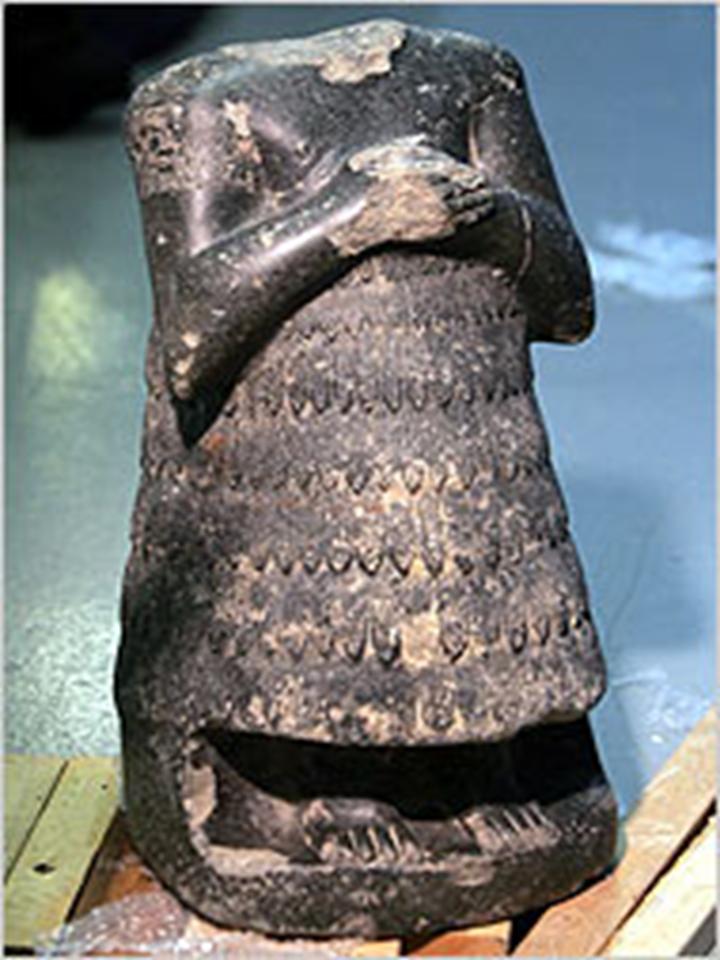 |
A headless stone statue of the Sumerian king Entemena of Lagash, looted in the ransacking of Iraq’s National Museum three years ago, has been recovered. |
The Entemena statue was taken across the border to Syria, and put on sale on the international antiquities market. Thousands of looted artifacts that remained in Iraq — from tiny cylinder seals to the famed Warka Vase — have since been returned to the museum, and a few pieces have been turned over by foreign countries, including Italy and the Netherlands. But the Entemena statue, estimated to be 4,400 years old, is the first significant artifact returned from the United States and by far the most important piece found outside Iraq.
American officials declined to discuss how they recovered the statue, saying that to do so might impair their efforts to retrieve other artifacts. But people with knowledge of the episode described a narrative that included antiquities smugglers, international art dealers and an Iraqi expatriate businessman referred to as the broker who was the linchpin in efforts to recover the piece and bring it to the United States.
Since early June, the statue has been in an art storage warehouse in Queens. American officials had planned to turn it over to the Iraqi government at a public event, said Marc Raimondi, a spokesman for the Department of Homeland Security. That opportunity presented itself yesterday when the Iraqi prime minister, Nuri Kamal al-Maliki, visited Washington, where he discussed security problems in Baghdad with President Bush.
In interviews over the weekend in Baghdad, Iraqi officials expressed relief that the statue of the king, which had stood in the center of the museum’s second-floor Sumerian Hall, had been found. But the same officials voiced frustration at what they said was the slow pace of international cooperation on the recovery of artifacts.
“I’m overwhelmingly happy,” said Liwa Sumaysim, the Iraqi antiquities minister. “We hope we get it soon so it goes back in the Iraqi museum, where it belongs.”
A spokesman for the antiquities ministry, Abdul Zahra Talqani, said the ministry first received word of the recovery about two months ago. He said hopes had been raised in the past, after reports of the recovery of the statue in Iraq, but those pieces turned out to be clay copies that had also been looted from the museum.
In June, not long after the statue was brought to the United States, two antiquities scholars were taken to the Queens warehouse, known as The Fortress, to authenticate it. The statue, which is made of diorite, a hard, dark rock similar to granite, was encrusted with dirt, suggesting that it might have been concealed during its sojourn in Syria. In addition, there were fresh chips along parts of its stone surface that did not appear in historical photographs, indicating recent damage.
Mohsen Hassan, an expert at the museum’s commission on antiquities, said that the statue, which weighs hundreds of pounds, was the heaviest piece stolen from the museum and that looters probably rolled or slid it down marble stairs to remove it, smashing the steps and damaging other artifacts.
The statue of Entemena of Lagash is among the most important artifacts unearthed in excavations of Ur, an ancient southern city. The king is dressed in a skirt of tasseled sheepskin and his arms are crossed in prayer. Detailed inscriptions run along the figure’s shoulder and back.
The statue was found headless when originally excavated, and experts say its head might have been lopped off in ancient times to symbolize Ur’s emancipation from Lagash.
One of the experts who authenticated the statue, John M. Russell, a professor at the Massachusetts College of Art in Boston, said it was not only archaeologically significant but also striking because the king’s muscular arms were sculptured in a lively, naturalistic style. Earlier sculptural styles were cruder, he said.
Efforts to sell the statue began not long after it was stolen, said people with knowledge of the episode.
Want to Know More About Lagash & Sumer?
Sumer is the name of the area we now refer to as southern Iraq. Here the Sumerians discovered writing, the wheel, and religion. Many cities of historic importance lied within this area, namely Ur (where the biblical Abraham was born), Uruk (where Gilgamesh ruled), and Lagash. Each city was ruled by a series of rulers associated to a dynasty. The rulers in Lagash for example are known as the rulers of the First and Second Dynasties of Lagash. King Entemena ruled around 2400 BC (over 4400 years ago) in the First Dynasty Lagash.
zCrew |
Hicham Aboutaam, an antiquities dealer who owns galleries in New York and Geneva, was approached while visiting Lebanon and shown a picture of the statue to gauge his interest in buying it, those people said. Initially, those holding the statue were seeking millions for it, one person said. Mr. Aboutaam soon discovered that it had been stolen and did not pursue the deal.
It is not clear precisely when or how Mr. Aboutaam — who pleaded guilty in 2004 to a federal charge of falsifying a customs document related to a different artifact — informed federal officials. He and his brother and business partner, Ali Aboutaam, declined to answer specific questions about the episode.
Last year, federal prosecutors in New York contacted Hicham Aboutaam and expressed interest in trying to recover the statue, said one person with knowledge of those events. Mr. Aboutaam agreed to help. Subsequently, he or his brother made contact with an Iraqi expatriate businessman now living in Europe. Soon, that businessman, who was referred to as the broker, became the pivotal figure in securing the statue.
Little is known about the businessman other than that he is involved in construction. But he began to shuttle among Iraq, Syria and other countries to make contact with those holding the statue and to negotiate its turnover. It was not known whether money had been paid to those holding the statue or whether promises had been made.
When asked what would be done with the statue, Mr. Hassan, the museum official, did not hesitate.
“We will fix it and put it in the same place where it was,” he said, adding that security had largely been restored at the museum, which is close to notorious Haifa Street in a district that periodically erupts in violence.
But a tour of the building over the weekend, granted reluctantly by Mr. Hassan, raised questions as to how the museum could function while housing valuable artifacts like the statue. A walk down a corridor toward the Sumerian Hall, for example, ended abruptly at a concrete wall, which someone had crudely crosshatched with a fingertip to simulate bricks. Mr. Hassan awkwardly conceded that four times since the invasion, he had been forced to wall off the collections as the only reliable means of preventing further looting.
He said he most recently put walls up a couple of months earlier after a mass kidnapping close to the museum gates. “When things get better,” he said, “we break it.”
Dutch Police Hand over Looted Artifacts to Iraq
Courtesy of the Penninsula (Qatar News)
26 July 2006
ARE YOU COVERED? |
 |
ATO INSURANCE
Click Photo For More Information
Auto | Homeowners | Business | Health | Life |
|
(ZNDA: Amsterdam) Dutch police have handed to Iraq three archaeological pieces that had been stolen in post-war looting, Iraq's ambassador to the Netherlands said.
Siamand Banaa said the stolen pieces-three ancient clay tablets-were probably taken from a museum in Iraq. Known as cuneiforms, the tablets belong to one of the earliest known forms of written expression.
They were among many valuable pieces stolen from the country before and after the war in 2003. "Thousands of ancient artefacts were looted from Iraq after 2003 but also before the liberation," Banaa said.
He said police did not give details about how they had found the looted pieces, but said that three Iraqis were involved.
Three years after the US-led invasion of Iraq and a widely publicized break-in at the Baghdad Museum, experts say the country is a hotbed of antiquities plundering that threatens to leave huge gaps in the understanding of its rich history.
Once called Mesopotamia, Iraq is often regarded as the cradle of civilization and the birthplace of cities.
In spite of efforts by the United Nations and law enforcement agencies including the FBI and Interpol to curb ransacking and trafficking of artefacts, Iraqi pieces chronicling millennia of human history are finding their way to private collections across the world. Once unearthed, they are smuggled out of the country through Jordan, Lebanon and Turkey to Europe and the United States and flood the black market.
Christian Clerics Ask Tehran to Ban Da Vinci Code in Iran
Courtesy of the Canadian Broadcasting Company
26 July 2006
(ZNDA: Tehran) Iran has stopped publication of the bestselling novel The Da Vinci Code after protests about the book from three Christian clerics.
The Persian translation of Dan Brown's thriller is in its eighth edition in Iran, and books already on the market will not be removed from shelves.
But Iran's culture ministry announced last Wednesday that it would not allow another edition to be published.
"Based on the request of three Christian clerics, we decided to ban its republication," said an official at the Ministry of Culture and Islamic Guidance, according to Reuters.
Iranian Christians, numbering about 100,000, are a small minority in a country of 69 million Muslims.
However, there are two seats in Iran's parliament for the mainly Christian Armenian community and one for the tiny Assyrian Christian community.
Christian groups around the world have objected to The Da Vinci Code, because it suggests that Jesus was married to Mary Magdalene and the couple had a child, whose bloodlines survive to this day.
The book, first published in 2003, has sold more than 60 million copies worldwide and been made into a film starring Tom Hanks.
The film has not been permitted into Iran, but is available in pirated DVDs.
Egypt, Pakistan and some states in India have also banned The Da Vinci Code.
|
|
Surfs Up!
Your Letters to the Editor
|
What We Need is More ROSIES
Youel Eshay
Australia
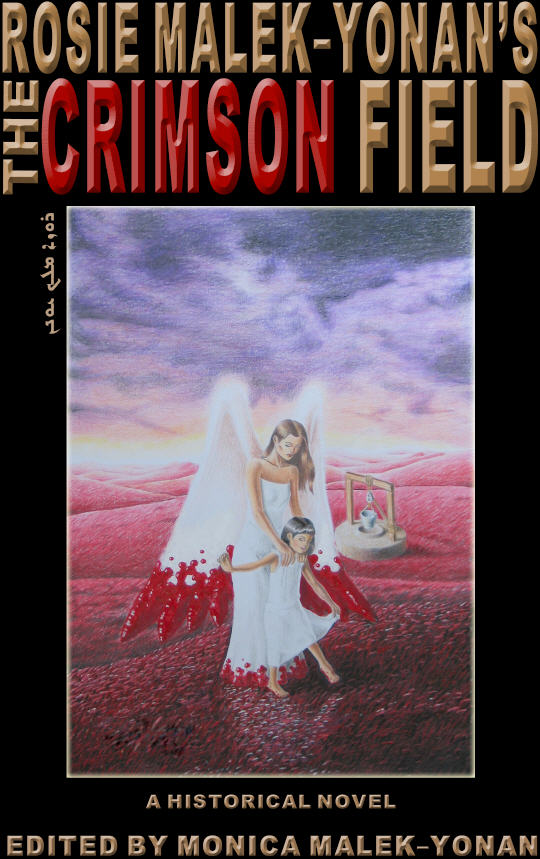
Click Book Cover For More Info |
As an Assyrian living in Australia I enjoy my beer and have a bet in my local TAB and mingle with friends and colleagues and discuss the pros and cons of international politics. I also enjoy watching some of those American serial dramas and soap operas that fill the Australian TV. I also enjoyed watching a beautiful oriental girl taking part in episodes of Sienfield, Murder She Wrote, JAG, Chicago Hope, Babylon 5, and Days of Our Lives, Dynasty and countless others. I was delighted to know that she was an Assyrian girl migrated from the country of Iran and settled in California, and made it in Hollywood. That personal achievement drew my attention to this young actress and I looked forward to the day that I would be able to meet her and add her autograph to my collection of Eusebio da Silva Ferreira, the great international Soccer player of 1960’s, Shirley Bassey, Gloria Estephan, and last but not least The Drifters when they performed in The Nineveh Club. My interest lay there and I wished better things for her.
Then I came across The Crimson Field, a book written by this wonderful lady that took her to the level of best writers and novelists. The events depicted in her novel made me feel sad and tears kept rolling and I could not understand why humans are so cruel to their fellow human beings. Well, such is life and I sincerely hope that such events will never happen again and we can all live in peace and embrace each other with love and harmony.
But, and a big BUT, my whole world turned around when Rosie Malek-Yonan, the same actor and writer packed up her gear, went to Washington, stood high before a Congressional Committee on Capitol Hill and testified courageously and without hesitation in front of the whole world. She told of the tragedy and persecution that is being repeated after ninety years, and demanded that such atrocities be stopped against her brothers and sisters who are being persecuted solely for being Christians. Rosie, you cannot stop at Washington! March towards London, Paris, Berlin, Baghdad and Urmia, where it all began, and let your voice echo amongst the remains of those victims that are buried in the massive grave that extends from Urmia to Mesopotamia. You have made us all proud and tomorrow we shall have more Rosies to plant roses of love instead of thorns of hate and one day, history will say it was ROSIE MALEK-YONAN who started it all.
Thank you and God bless you.
Assyrian Church of the East Youth Ministry
St. Mary's Assyrian Church of the East
Los Angeles, California
We, the Youth Ministry Association of the Assyrian Church of the East, give glory to God for a successful and spiritually fruitful Youth Conference 2006 just completed, being convened from June 30 to July 4, 2006 in Los Angeles, California. The theme of this year was ‘Revolution’ (Quyama)—indicating the inner, spiritual renewal and conversion to which all the Youth of the Church were called to be engaged in. The Youth further give the Lord thanks for the blessing of His Holiness Mar Dinkha IV, Catholicos-Patriarch of the Assyrian Church of the East, who gave permission to conduct such a gathering of the Church’s Youth.
 |
|
The almost 190 attendees, comprising the youth associations of the Assyrian Church in the United States, were gathered from among the following dioceses and parishes: 1) from the Diocese of Eastern USA, administered by His Holiness Mar Dinkha IV, there were participants from Mar Gewargis Parish (Chicago), Mar Andreos Parish (Des Plaines), Mar Mari Parish (Yonkers), Mar Addai Parish (Turlock) and Mar Zaia Parish (Modesto); 2) from the Diocese of Western California, headed by His Grace Mar Odisho Oraham, the participants came from Mar Yosip Parish (San Jose), Mar Gewargis Parish (Ceres) and Mar Narsai Parish (San Francisco); 3) from the Diocese of Western USA, headed by His Grace Mar Aprim Khamis, the participants were from St. Mary’s Parish (Los Angeles), Mar Patros Parish (Phoenix), Mar Paulus Parish (Orange County) and Rabban Hurmizd Parish (San Diego). Also in attendance from the Diocese of Australia and New Zealand, headed by His Grace Mar Meelis Zaia, were the following representatives from the St. Peter and St. Paul English-speaking parish in Sydney: Rev. Genard Lazar (pastor of the parish), Rev. Deacon Robin Hermizd and Robert Khnanisho.
On Saturday, July 1 we were enriched by the spiritual conferences delivered by various clergy who had attended. These conferences included: “The Holy Scriptures in our Daily Lives,” by Rev. Genard Lazar, pastor of SS. Peter and Paul Parish, Sydney; “The Place of the Youth in the Church Today,” by Rev. George Bet-Rasho, pastor of St. Mary’s Parish in Los Angeles; a brief historical survey of the Assyrian Church, and “Our Participation in the Holy Qurbana: Heaven on Earth,” by Rev. David Royel, pastor of Mar Yosip Parish in San Jose. The participants gave their feed-back and comments in the Q & A session, and other activities were also provided in order to have the youth to better know their brothers and sisters from the various parishes.
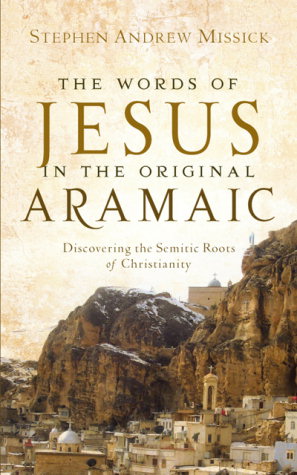 |
Click Image to Order Your Copy |
At the outcome of the conferences, the clergy outlined five points which we decided to make our own personal spiritual endeavors; these included: 1) changing our life for Christ; 2) reading the Word of God on a regular basis; 3) applying the Lord’s Word to our daily life; 4) finding our place in the Church; and 5) occupying our place in the Holy Church and fulfilling our obligations as faithful sons and daughters. These guidelines will be with us until the next Youth Conference.
It was decided that the next Youth Conference (2007) will take place in Chicago, Illinois and will coincided with the happy occasion of the Golden Jubilee of the Priestly ordination of His Holiness Mar Dinkha IV, Catholicos-Patriarch. Various spiritual and festive activities will be arranged in order to properly celebrate this joyous occasion. Furthermore, in light of the up-coming rogation of St. Mary the Blessed Virgin (August 1 to 15), it was decided that the first three days of the rogation (from August 1 to 3) the Youth will fast in order to supplicate God for unity in the Assyrian Church at large. This fast was inspired by the thoughts and prayers of many of the Youth that the Assyrian Church might unite and become one Church again as before the various schisms.
At the end of the Youth Conference, a vote of thanks was offered by all of us gathered, to the parish of St. Mary’s in Los Angeles for organizing and hosting this year’s Youth Conference. Special thanks were offered to Rev. George Bet-Rasho for his endeavors in putting the conference together.
We praise the mighty name of our Lord Jesus Christ, our hope and salvation, for this new surge of an inward stirring for holiness and the Spirit of the Lord to dwell in us as his children. The Holy Spirit is indeed working in the Assyrian Church of the East, and in her Youth—the tomorrow of the future of both our Assyrian Church and Nation.
Our Precious Church
Ramina Amino
California
Recently I attended the first youth conference held in Los Angeles, California by the Holy Apostolic Catholic Assyrian Church of the East. It was one of the most unsurpassed conferences I have ever attended. During the conference, numerous topics emerged and were answered; along with that, the Fathers articulated about the importance of the church.
The Fathers helped the youth grasp how precious the church is.
An Illustrated History of Assyrian Christianity |
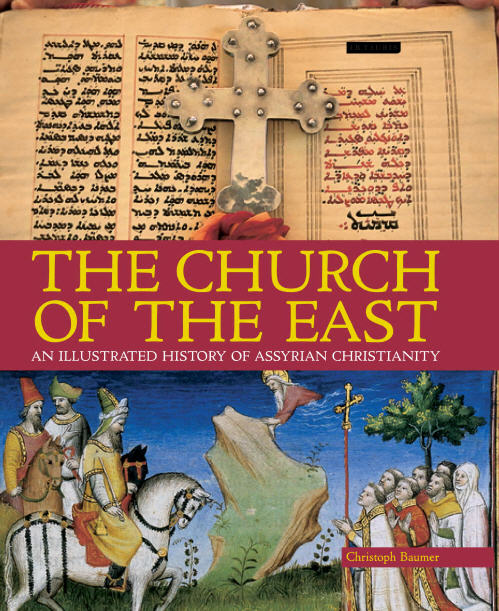 |
20% off List Price for
ZINDA READERS
For a limited period only & only for readers from U.S.
View Zinda Info: Click Here
Click Bookcover to Order Your Copy
Use Promo Code P356ED
when you proceed to 'Checkout'
|
|
The Holy Apostolic Catholic Assyrian Church of the East has claimed to be the most purest and closest church to the holy Apostolic teachings. We hold the truth, yet sadly, we do not realize it. The message delivered in the conference was self-awakening and made many teens realize that we need to “stop living in the past” as Father David stated. The conference helped the youth realize what the church means for us Christians, how it begun, and why it is so valuable. One of the most significant facts made about the church is that during the Liturgical Eucharist, the Holy Apostolic Catholic Assyrian Church of the East has maintained the bread that was used in the last supper of our Lord Jesus Christ with His twelve Apostles.
When Christ had the Passover supper with His twelve Apostles, He established the sacrament of the Eucharist; this is exemplified in Mark 14: 22-24: “And as they ate, Jesus took bread, blessed it, and broke it, and gave to them, and said, ‘Take, eat; this is My body.’ And He took the cup, and gave thanks, and gave it to them; and they all drank of it. And He said to them, ‘This is My blood, that of the new covenant, which is being poured out for many.’” When Christ distributed out the fragments of bread among His twelve Apostles, each one received a piece, but John received two pieces. According to the Holy Apostolic Catholic Assyrian Church of the East tradition, John kept one of the two pieces he had received during the last supper. When Christ was being crucified, the Roman soldiers pierced our Lord on His side with a spear, and blood as well as water came out. John took the piece of bread he had saved, held it next to Christ’s side, and drops of Christ’s blood came onto that piece of bread.
John spread his bread to the first priests of the church; those priests each took a piece of that original bread, mixed it in with their batch of bread for Qurbana, and saved a fragment of that batch for next week. This tradition has been continuously passed down in our church. While mixing the batch of bread, the Fathers recite certain prayers, bless the bread and wine, and say exactly what Christ said during the last supper: “Take, eat; this is My body…This is My blood, that of the new covenant, which is being poured out for many” Mark 12:22-24. This is how the bread and wine change spiritually into the body and blood of Christ.
The Fathers helped the youth to understand what it means to be a true Christian. Being a true Christian means maintaining your balance in a world filled with clever deception and subtle, satanic teachings hidden in flowery philosophies and decorated with exciting slogans. Being a true Christian means having to deal with rigorous obstacles every second of everyday. Being a true Christian means having to endure suffering for our Lord Jesus Christ. Being a true Christian means being faithful to our church. The Church is Holy and we, as the next generation, need to fuse together, become one, and maintain this two-thousand year old church; for just as it is written in John 10:16:“…there will be one flock under one Shepherd.” If we hold the truth, and each and every one of us does something about it, then slowly we will become the change we wish to see.
As someone once told me, “If one life shines, the life next to it will catch the light.”
Still A Bishop
Emmanuel Binyamin
Chicago
I would like to comment on the article by Adam Haddad of Canada who kept on referring to Mar Bawai as the ex-bishop or even calling him by his real name. Mar Bawai is still a Bishop and no one can take that away from him that includes Mr. Haddad or his church. If suspending a bishop takes away his rank or power then all of bishops of the Assyrian Church of the East are ex-bishops as they were suspended in 1973 by the late Patriarch of the Assyrian Church of the East Mar Shimun Eshaya.
 To view the latest bulletin of the Advisory Council of the Assyrian Church of the East, Diocese of Western California, click here. To view the latest bulletin of the Advisory Council of the Assyrian Church of the East, Diocese of Western California, click here.
Adam Haddad’s Fear of the Tour of Canada
Sam Shalalo
Australia
If there ever was a “Tour de Canada” similar to ‘Tour de France’, I bet that our friend Adam Haddad would have been delighted to see so many people filling the street paths all over Canada, watching the cyclists doing their thing in pursuit of the ultimate prize of the ‘Cup of Tour de Canada’, not to mention the monetary fulfilment and advertising rights etc...
Yet when it comes for the Canadian Assyrians to assemble in a house of God and listen to a mass being celebrated in their Assyrian language, then to meet again in a gathering of Assyrian Youth of Canada and listen to a man of God speaking in their own language; in Mr Haddad’s biased opinion, that is a crime.
If Mr. Haddad believes as he says “that the two events are sponsored by a few disgruntled members of the church”, and furthermore he claims “that is quite evident from the desperate tours he is now making of the major cities pleading for support, the response has been nothing but disappointing”; then why is he so worried?
Who has placed Mr. Haddad in the position of being an advocate to defend the Canadian Assyrian parishioners of the ACOE, telling them who to not listen to and be aware of? How can he accuse His Grace Mar Bawai’s followers of being “a mix of tribal affiliation, politically misinformed and outsiders”? Isn’t this exactly what you yourself are doing now?
If Mr. Haddad or those who think like him know that “the youth in Canada, like all Assyrian youth around the globe, are sick and tired of the mixed messages they have been getting from certain church leaders, this ex bishop being one of them, along with some politicians”, then why fear him so much that he is not willing to have the Assyrian youth of Canada come and listen to this man and decide for themselves without his interference or perhaps his poisoning of their minds beforehand.
But I am sure as much as Mr. Haddad is also, that as he himself concluded his hate filled article that “Toronto youth, unlike the children of old Hamlin, are mature enough not to fall prey to the tunes of Adam Haddads of Canada”.
Assyrian Aid Society Hosts its First Community Garage Sale
Helen Talia
Chicago
On Saturday and Sunday, July 22nd and 23rd, the Assyrian Aid Society – Chicago Chapter sponsored a weekend long community garage sale. The mission of the garage sale was to raise proceeds to help underprivileged Assyrian families in Iraq. The event took place at the parking lot of the Assyrian National Council of Illinois in Skokie, Illinois.
Generous Assyrian families from the Chicagoland area donated every bit and piece to the garage sale, consisting from brand name clothes to household appliances. After only one month’s advertisement on local radio airtime, the Chaldo-Assyrian Center was flooded with innumerable items to help generate handsome profits. Inviting more than just the Assyrian community, the event was marketed thru advertisement in local newspapers and neighborhood businesses.
The success rate was satisfactory, noted Robert Mulhim, President of The Assyrian Aid Society – Chicago Chapter “this event would not have been possible without the help and support of the Assyrian community. For this, we are grateful! It went beyond our expectations, and it brought the community together. Based on the success we’ve seen we hope this becomes an annual, or even a semi-annual event.”
Congratulations and special thanks to members and friends of the Assyrian Aid Society for their tireless efforts. Worth noting - among the volunteers were Assyrian youth. Chebo!
|
|
Surfer's Corner
Community Events
|
August 7th Commemorations in Modesto
The Assyrian American Coalition of Stanislaus County in coordination with the Local representatives of the Assyrian Political parties, Assyrian Democratic Movement (ZOWAA), Assyrian Democratic Organization (Matkasta) and the Bet-Nahrain Democratic Party (BNDP) will commemorate the “Assyrian Martyr Day”, on Monday August 7th, 2006 at Yosemite Banquet Hall, 2549 Yosemite Blvd., Modesto, California commencing at 7:30 PM. This event is open to the public and everyone is encouraged to attend.
Australian Census 2006
Ashur Isaac
Community Youth Worker
Assyrian Resource Centre
Assyrian Australian Association
A community announcement
The next Australian census will occur in August 2006. The census helps to give a clear picture of the size of the Australian population and its make-up. Demographic information, such as age, gender, number of family members, education, income levels and where people live allows the Australian government to better plan for the future and administer resources for the benefit of Australians. Many agencies and business also use this information for planning and delivery of services.
In this year's Australian census, three questions are of particular importance for our community and they relate to the language an individual speaks, their ancestry and the name of their religion. For the Assyrian community, it is vitally important to gain an accurate estimation of its numbers in Australia, particularly in the Fairfield NSW area where the majority live. An accurate number of our community's population allows for stronger lobbying for funding and mainstream service development to better cater to our community needs.
In the 2006 Census Household form, question 16 is about a person’s language; question 18 is about a person’s ancestry and question 19 is about a person’s religion.
It is important to note that question 18 is not about what country a person was born in. For example, many Assyrians are born in Iraq, Iran and Australia – but their ancestry would be written as “Assyrian”. For question 19, which is about religion, a person can answer by writing the name of their church instead.
For a guide on filling the census form, as well as audio and video recordings in the Assyrian language, please click here.
Although our people are known by many names, the names will be grouped in the Census results under “Assyrian/Chaldean/Syriac”; which acknowledges the commonality of our language, ancestry and religion.
|
|
Ankara’s Rhetoric and Assyrian Pavlovian Response
Nineb Lamassu
United Kingdom
…No man is an island, entire of itself; everyman is a piece of the continent, a part of the main[1].
This famous passage by John Donne also applies to nations and peoples and not just individuals. This is particularly true in this day and age when we speak of the world as a global village, and especially so in the peculiar case of the Assyrians. Yet forging strategic and/or tactical alliances is one thing and running down the cliff like a lemming is another. Unfortunately the latter has been the case with the Assyrians all throughout our modern history, starting from the Russians, British, and the French, and now more recently with the Kurds.
The bitter results of the Assyrian-Kurdish alliance has left the Assyrian intelligentsia in a state of desperation. This desperation is resulting in misconstruing the dialectical and historical developments behind the current plight of our people and in misguided decision-making.
In light of the continuous Kurdish maltreatment of the Assyrians (here, and all through this article, by Kurds, and Kurdish, I mean Kurdish leadership, and not the Kurdish people), there seems to be a prevailing conditioned response among many Assyrians that seeks to build alliances with states hostile towards the Kurdish aspirations (as proposed by the Kurdish leaderships). Especially Turkey, which is one of the neighbouring states fearing the growing Kurdish independence in Iraq could encourage similar aspirations among their large Kurdish population.
At the outset an Assyrian-Turkish accord may appear appealing and logical – based on the moto “the enemy of my enemy is my friend” - but one must scrutinize every diminutive possibility. Moreover, one must also study the recent failing alliance with the Kurds before entering into a new one with Turkey. One must examine the nature and history of the recent Assyrian-Kurdish alliance and juxtapose that along the proposed accord with Turkey to demonstrate that “The Turkey Factor”[2] is nothing but another mirage to a nomad.
If history has taught the Kurds that they have no friends but the mountains, the same history has taught the Assyrians that they have no friends but themselves.
The most recent Assyrian-Kurdish alliance manifested itself in Iraq between the ADM and PUK-KDP, and in Europe as GHB[3] and PKK.
In the aftermath of the Gulf War the United States and the United Kingdom established a “safe haven” policed by a “no-fly zone” in the north of Iraq. The Kurdish leadership represented by PUK and KDP seized this opportunity and embarked to replace the Iraqi United Front, “Jabha Jud” with the Kurdistanian Front, “Jabha AL-Kurdistaniya”. Consequently in June 1992 elections were held which resulted in the formation of the Kurdistan Regional Government KRG.
The Assyrians under the leadership of ADM deemed it necessary to ally our fate with that of the Kurds, and form an accord with the main two Kurdish political parties, i.e. KUP and KDP. To forge the pact with PUK and KDP, the ADM sought the advocacy of the Iraqi Communist Party (ICP).
Immediately after the elections the Assyrians received five parliamentary seats, a ministerial position, and the right to teach our language. Suffice to say that ADM representing our people in Iraq never negotiated our rights in reaching this accord. ADM was content with these symbolic seats, the ability to teach our language, and hosting concerts for famous Assyrian singers from the west, and occasionally building useful irrigation projects (cf. today’s Aghajanians!).
As ADM entered the KRG there remained many Assyrian villages forcibly occupied by the Kurds; notorious and blood thirsty Kurdish leaders, like Bedirxan and Simco were openly revered; and Assyrians were often intimidated, kidnapped and murdered. But to avoid being an island detached from all its surroundings, ADM opted to justify this alliance even after Sahda Francis Shabo, an ADM representative in the KRG, was assassinated soon after he debated the case of the occupied Assyrian areas.
In an interview by the writer of these lines with Mr. Younadam Kanna in Sydney Australia[4] , the writer questioned Mr. Kanna regarding Ms. Helena Aloun Sawa’s murder and the butchering of Mr. Edward Khoshaba. Mr. Kanna underplayed the Kurdish role in Mr. Edwards’ murder, correlating it to many criminal acts that take place in the west. As for Ms. Sawa’s case he said, “every people have vulnerable women that do unfortunate acts for the sake of money. We too have such women, we are not responsible for these women that have no dignity and respect for their body”[5] .
Although ADM claimed to represent the free will of our people in the North but all through their parliamentary presence as the purple faction, and until this very day, the ADM has not managed to achieve its primary objective: “the constitutional recognition of the Assyrian national existence” in the North. The KRG never actually recognised the national existence of the Assyrians, only in occasional verbal statements, and communiqué!
In Europe the most active Assyrian political party was the ADO but due to grave political mistakes and some unfortunate set of events, mass disintegration took place both among the Assyrian masses and the ADO leadership and activists. This created a vacuum within the Assyrian arena which PKK exploited to assimilate our people into the bigger Kurdistanic vision, like they had so successfully done with the Yezidis.
Thus they began to motivate some Assyrians that had been members of the PKK whilst in Medyat, these ex-members still had strong sympathy with the PKK. PKK also exploited the general Assyrian feeling towards Turkey’s unfair economic structure and her policy towards the Assyrians to enlist some Assyrian liberals and leftists.
Shortly thereafter, these Assyrian ex-members of PKK established what came to be known as “Duronoye” i.e. revolutionaries, which later called themselves GHB[6] .
Around this same period, the Kurdistan Parliament in-Exile[7] (PKDW) was established under the aegis of PKK. There were a few Assyrians that became members of this parliament and all pledged their allegiance to Kurdistan[8] ! A few years after that the PKDW moved to establish the Kurdistan National Congress[9] (KNK). Some members of the Duronoye leadership became members of this KNK, and along with the 700 strong delegates they stood in silence in respect of the Kurdish national anthem (Ey Riqip) and in memory of a long list of Kurdish so-called heroes including Bedirxan, relatively perceived as Hitler’s equal by the Assyrians[10] .
Despite all these alliances the Assyrians never achieved anything; one only needs to observe the current KRG policies towards the Assyrians[11] to learn that ADM’s membership of KRG never achieved any objective result, something that ADM has realised now but unfortunately through the hard way! As for the PKK, one only needs to read the following paragraph from a recent article published by Yeni Özgür Politika, the mouth piece of PKK, quoting Öcalan (although arrested but continues to be the current leader of PKK) as saying[12]:
“If we were to study Turkey’s war of independence, we would realise that the imperialist countries had much to do with it. These great nations had a plan for the Middle East. What I am about to say, I hope it would not be misconstrued by the Armenians. I am not against the rights of any people. But under the leadership of Mustafa Kemal, had the Kurds and Turks not reached an accord, the habitat of the Kurds, and the current geography of Kurdistan would have been divided into many parts. Today, Vilayets like that of, Erzerum, Van, and Diyarbakır would have been incorporated into the boundaries of Armenia. Iraq would have been a total Arab state, and north Syria would have been a little state of Assyria. Perhaps the Vilayets of Şırnak, Hakkari, Siirt would have been given to the Kurds.”
This mistreatment of the Assyrians and such abysmal statements of course do not help. They bring to mind the still fresh memory of the 1915 genocide, designed by the Young Turks and implemented by the then Kurdish leaderships along with Turkish army. It is totally abhorring to hear such a statement as the aforementioned from the leader of the most progressive Kurdish political entity! How can Öcalan see it permissible to praise the unholy Kurdish-Turkish alliance which resulted in the near annihilation of the indigenous Christian people of the area, be it Assyrians, Armenians or Greeks?! According to Taner Akcam, a progressive Turkish scholar, Turkey is build on the blood and bones of its Christian population, similarly Öcalan’s dream Kurdistan could not be so near achieving had the Kurds not been proactive in Seyfo, which consequently changed the demographic reality to the Kurdish advantage! In light of the above, one can understand this abnormal current that is sweeping across the Assyrian intellectual circles, and dashing their analyses towards making some sort of a pact with the racist-fascist oligarchic government of Ankara. But any such pact must be studied carefully and not be built on compromise in a desperate need to seek an ally against the Kurds that have now positioned themselves in a position where the Assyrians have no choice but to perceive them as the primary enemies of Assyria and the Assyrians.
Today in Turkey, the Assyrians are still not recognised as a national ethnicity. In fact, every Assyrian child goes to a classroom everyday, stands up and says, “I am proud that I am a Turk”! The genocide is still a taboo subject. The Assyrian genocide still continues in Turkey but has now taken different forms as ethnocide and culturecide. The Assyrians are forced to adopt Turkish last names, for example you can find many Assyrians with Özturk (meaning real Turk) as a last name!
Most of the Assyrian lands are currently being confiscated by the Turkish Forest Authority[13].
Turkey instigated in 1936 discriminating laws, which prohibited Christian and Jewish foundations and parishes to own properties and real estates while Islamic foundations and parishes go free from the burdens of these laws. These laws are still in force and are widely applied. The real estate properties which belonged to these groups have since 1936 continuously been confiscated by the governments. The Turkish village guards have been occupying the Assyrian villages for the last ten years under the full approval of the Turkish government.
In 2001 Bülent Ecevit issued a decree promising that the Assyrians shall enjoy full constitutional, legal and human rights and they shall recover their property and land. Based on this ADO initiated a series of table discussions with Ankara via the Assyrian Swedish Federation to see the implantation of this promising decree. But this project was abandoned by the federation since May last year because in essence Ecevit’s promising decree was nothing but calligraphy on ice, in other words: a sweetener to mute the Assyrian lobbyists in the west[14].
Thus the exciting fury of Assyrian return and resettlement in Turkey proved to be nothing but a tempest in a pot because uttered words are one thing and implementing them on the ground is another!
These are very minor but salient points, no doubt there are many more that need to be discussed but not in the limited scope of this article. However, one must at the very least ask the following three questions:
- Why would Mr. Tuhan Çömez[15] , the Turkish representative, meet with the Assyrian community of France after they had so successfully added to the elevation of Seyfo, the Assyrian genocide: by recently erecting a permanent commemorative monument? And why now that the Assyrian Swedish Federation has seized all discussions with Turkey regarding Ecevit’s 2001 decree?! If not to utilise the lobbying power of the French Assyrians like it did with the Swedish Assyrians[16] to some degree, and to defuse the now de facto Assyrian genocide issue.
- Why would Turkey mind if the rightful owners of the land would only return to it for holidays as an alternative to Spain, Italy and Morocco (sic). It would bring Turkey extra revenue in tourism and Turkey would not have to think about restitution and security for real Assyrian resettlement.
- If the Assyrians of Harbule, Gaznakh, Eshe, Baz, Baspin[17] would actually return to their lands and inhabit them in security, what about those of Tur-Abdin, and Hakkari?!
It is no act of serendipity to find Mr. Aldun regrettably not approaching the “very complex question of the recognition of the genocide” (sic). Mr. Çömez may jokingly remark “And if you were the Turkish prime minister” but he would not have tolerated the bare mention of Seyfo and the atrocities of 1915. Mr. Çömez is only playing with Assyrian gullibility by such statements.
Now that we have humbly demonstrated that there really is no change in Ankara’s policies towards the Assyrians, how can one perceive the following part of Ms. Shimoun’s article if not as a Pavlovian response to sweet rhetoric from Ankara, and Kurdish maltreatment of Assyrians?
“Turkey has been “nicer” to their Christian Assyrian minorities, rethinking their property rights, citizenship rights, and even encouraging Assyrians to return to their ancestral homeland in (mostly) Southeastern Turkey.” [18]
In Seyfo, the 1915 genocide the Young Turks exploited the Kurdish leadership to implement their plan to eradicate the Assyrians from Assyria, and then the Young Turks turned into Turkifying the Kurds by enforcing similar policies on them. Do we the Assyrians of today want to be used by Turkey against the Kurds, do we want to be a useful tool today and one that will be disposed of after its use by date?! Two wrongs do not make one right but the just cause always triumphs!
Thus extreme vigilance is required from us Assyrians. Of course we are not an island: strategic and tactical relations and pacts with other nations are necessary for us to achieve our aims and objectives as a nation. But one has to also learn from the past and not dance to a tune not in rhyme with our heartbeats!
The right move is not to ally with Turkey in response to Kurdish tyranny but for our political parties to be able to see eye to eye on certain issues of importance, for them, and for once, to be able to put Assyria and the Assyrians first and not their party politics! ADM, AUA, and ADO all have their weaknesses individually but together they can be a power to be reckoned with, one that would alert the Kurdish leadership more than an alliance with Turkey!
It is unavoidably convenient and suitable to conclude with a word of wisdom from St. Isaac of Nineveh, a hermit of the six century A.D, that says:
Make sure you see to small things, lest otherwise you may push aside important ones.
- Norton Anthology of English Literature. Fifth edition. W.W.Norton, 1962. Vol.1., 1107
- See an article by Mariam S. Shimoun in The Assyria Advocate section of Zinda Magazine:
8th July 2006, Vol. XII, Issue 14, http://www.zindamagazine.com/ThisWeek/07.08.06/index_sat.php
- Beth-Nahrin Freedom Party. Of course they were not always known as such; GHB has made a habit of changing their names almost every year or two. In the AUA conference held in April this year in Holland, they claimed that their current name is the “Syriac European Union”. How long this name will last is a question of time.
- The writer still has the interview on a MD in his personal archives, at the time the writer was running the “Echo of Nineveh” radio programme.
- This comment was omitted by the writer before the interview was aired.
- refer to footnote 3
- Parlamenta Kurdistane Li Derveyi Welat
- These were, George Aryo, Petrus Karatay, and Yelmaz Özgün, and Musa Culak. It is sometimes believed that Mr. Karatay was the only one of the three that swore an allegiance to Beth-Nahrain and not Kurdistan.
- Kongraya Netewiya Kurdistanê
- Please refer to the introduction of the KNK charter booklet.
- For some objective and brief information on this matter please refer to the following two links:
http://www.firodil.co.uk/resources/kurdishFallacy.pdf
http://www.aina.org/guesteds/20060522114735.htm
- The writer has tried to the best of his ability to keep the translation verbatim. To read the article in Turkish please visit the following link:
http://www.yeniozgurpolitika.org/article4302.html
- for more information refer to: http://www.firodil.co.uk/resources/20060308.pdf
- There are other ADO related reasons but they are not related to the subject of this article.
- See the article by Antoni Yalap in which refers to a meeting between AACF and Mr. Çömez.
8th July 2006, Vol. XII, Issue 14, http://www.zindamagazine.com/ThisWeek/07.08.06/index_sat.php
- In a debate chaired by the writer in April 2003 in Holland, Mr. Abdulahad Astepho representing the ADO was an avid advocate of Turkey’s entry in to the EU.
- The majority of the Assyrians in France belong to these villages.
- See an article by Mariam S. Shimoun in The Assyria Advocate section of Zinda Magazine:
8th July 2006, Vol. XII, Issue 14, http://www.zindamagazine.com/ThisWeek/07.08.06/index_sat.php
The Road to Assyrian Autonomy in Iraq
Part III
Sargon Sapper
Illinois
Despite the fact that I now reside outside the country, the people of Iraq and the land I call home remain very dear to me. Like many in my position, I follow the news and developments of our forefather's country and its region with longing and interest. I rejoice in their victories and feel pain in defeat. The progress of our people occupies much of my daily thoughts. To that end, it is my sincere hope that the Iraqi Central Government, the Kurdistan Regional Government, as well as any other political parties and sectarian religious groups will each thoughtfully understand the impact of their decisions regarding the atrocities being perpetrated in our homeland and assume their full responsibilities in resolving the continual problems and restoring basic human rights to all of Iraq's citizens. Make no mistake; this should be done in a democratic way. The welfare of the people of Iraq, and the sovereignty of the state should be based on equality of all people, regardless of ethnicity or sect. And, any attempts of self-interest or short-sighted favoritism should be fought relentlessly. One could hardly predict the future of Iraq as an independent state if the turmoil which threaten its people internally and the terrors which surround it throughout the Middle East are not addressed swiftly and justly once and for all.
My personal feelings regarding Assyrian Autonomy in Iraq and the reasons for demanding such a far-reaching yet equitable, lawful and ethical desire can be summarized as following:
- Since the establishment of the Iraqi government in the 1920's there has been a policy of not recognizing Assyrians as an ethnic group entitled to some distinct rights. Successive Iraqi governments followed suit and began calling Assyrians "Christian Arabs." Serious attempts took place toward the Arabization of Assyrians throughout the country. There were even negotiations with Britain and Turkey, at the expense of Assyrians, about the then Nineveh province (The Mosul Case) to actually deny Assyrians rights in Iraq.
- The Kurdish official policy is widely believed, at best, to be unclear about the Assyrian national existence in northern Iraq. The truth is, the Kurdistan Regional Government act toward the "Kurdization" of Assyrians is openly proclaimed. However it is discernible that, since the uprising of Kurds against the Iraqi regime in the early 1960's, Assyrians have suffered many times greater than either principal side of the clash. Many ordinary citizens lost their lives. Several of our leaders were kidnapped and mysteriously killed. Lands, even whole villages, were taken by force and outrageous violations were committed against Assyrians regardless of age, sex, and social status. It is imperative for all Assyrian sides to recognize that still now after three decades of declaring the Kurdish autonomy the collection of rights given to Assyrians are no more than nominal in nature.
- Within the context of the Iraqi opposition against the dictator Saddam Hussein, it is unfortunate to say that the Assyrians have noticed repeatedly that the views of the main factions contrast around almost every aspect of the future Iraq. Not one of them reveals an unconditional belief in the existence of Assyrian people as an ethnic sector among Iraqis. They carelessly depict Assyrians as either Arabs or Kurds by mere virtue of their present geographical distribution in Iraqi provinces.
- In my expectation a new global policy and contingency for toppling corrupt regimes and terrorists organizations will open the door widely for many to ask the question, "What the face of the new world will look like when such regimes and organizations are disintegrated?" And, of course, Iraqi people and Assyrians, in particular, are anxious to know the answer. Who will lead the new Iraq following the fall of Saddam's regime? In general terms, we should not anticipate a significant change suddenly changing the attitude toward Assyrians in post-Saddam Iraq. I base this belief on historical experiences which inform us, is nothing else, that when it comes to dealing with fundamentalists who possess religious hatred and extreme enmity, attitudes can only be reversed over long periods of time and cannot be changed easily or quickly from a society like the Middle Eastern one.
Clearly, it is not in our benefit or the benefit of future generations that our national aspiration remains no more than a remote probability mired in uncertainty. That is why we must focus only on things which remain in our control. This is the time to prepare our case in the way we see fair and self sufficient within the framework of a federal Iraq. Thus when the time has come, we can deliver a carefully prepared argument and through the voice of a powerful and unified people, and when given out chance, we will alter the course of history. This should be our new promise to our Assyrian people.
Note:
Part I of this manuscript (Zinda Magazine, May 13th 2006; Vol. XII- Issue 10)
Part II of this manuscript (Zinda Magazine, June 18th 2006; Vol. XII- Issue 12)
The End of Christianity in Iraq
Glen Chancy
Copyright © 2006 LewRockwell.com
The news from Iraq has been especially grim of late. Daily it seems violent death is everywhere in the form of car bombings at mosques and other public facilities, ethnic cleansing carried out by militias roving about the streets seeking victims, even soldiers and police doubling as sectarian enforcers. The statistics themselves tell a grim tale. Baghdad's morgue is receiving nearly twice as many dead Iraqis each day as it did last year. In June 2005, the Baghdad morgue was receiving 700 to 800 bodies a month, or an average of between 24 to 26 a day. In July of 2006, this number has shot up to an astounding 50.
This increase in the death toll is happening despite two events that were supposed to reduce the level of violence. First, almost 100,000 new U.S.-trained troops have been added since last year. Second, the U.S. military has an ongoing security "clampdown" in Baghdad designed to reign in the violence in the capital. Unfortunately, both the new troops and the "clampdown" have failed so blatantly, that even the US military was forced to admit that the level of violence in Baghdad has been hardly affected by its efforts.
Of course, the carnage is not limited to Baghdad alone. Nationwide, the situation is hardly any better. The United Nations mission in Baghdad recently reported that 2,669 civilians were killed across Iraq during May and 3,149 were killed in June. In total, 14,338 civilians were killed from January to June 2006.
Nor is life across Iraq in the midst of growing sectarian violence only becoming more dangerous for Iraqi civilians. Sunni insurgent attacks on U.S. and Iraqi forces have been increasing at an alarming rate. Attacks on American and Iraqi troops in June 2006 grew 44 percent to 88 from 61 compared to June 2005. While the number of American troops killed by hostile fire has declined, life is just as dangerous for them as it has ever been in post-Saddam Iraq.
All of this violence and mayhem is tearing the country apart at an increasing rate. In Baghdad, the Tigris river has become a dividing line between the Sunni west and Shiite east. This divide is stranding many of the city's seven million on the "wrong" side, making even their daily trips outside for shopping or to work into dangerous missions in enemy territory. To stay alive, many Iraqis have turned to fake IDs that can be used to fool sectarian militias out hunting for victims. For $35, those with easily identifiable sectarian names can get false documents that might mean the difference between life and death on an Iraqi street.
Other Iraqis have simply packed up and fled religiously mixed areas for what they hope will be safer ground among their co-religionists. The number of Iraqis who have registered for assistance as refugees within Iraq since the 22 February bombing of a Shiite shrine at Samarra stands at 162,000 people. Many of them live in 11 new tent camps. They include Abd Hammad al-Saeidi, who said that, "Gunmen told us to leave or they would kill us." The farmer from just south of Baghdad now lives with his family of 11 in a tent.
Obviously then, Iraq is rapidly becoming a nation of refugees. Sunnis and other minorities are leaving the south, while Shiites have been fleeing the areas around Baghdad and the north. For both the Sunni and Shia civilians caught in this cauldron of violence, the situation is tragic beyond description. However, as bad as things have been for Muslim Iraqis, for one vulnerable group of Iraqis, life inside "free Iraq" has been even more difficult. For the Assyrians, who are both Christian and the indigenous people of Iraq, the aftermath of Iraq’s "liberation" has been downright catastrophic.
The Assyrian Christian population of Iraq has been brutalized by both ethnic and religious attacks since the US-led invasion in 2003. Glyn Ford, a UK Labor member of the European Parliament and member of the "Save the Assyrians" campaign, recently laid out a litany of woe that has befallen the Assyrians. Ford reports that torture, kidnapping, extortion, harassment, church bombings, forced religious conversion, political disenfranchisement and property destruction are just some of the deliberate human rights violations that are both ruining and taking the lives of Assyrians in Iraq.
The President of "Save the Assyrians," Andy Darmoo, told a news conference in New York, "Today, the situation is the worst we have ever lived in Iraq."
Christians accounted for somewhere between five and twelve percent of the pre-war Iraqi population of 26 million. Most Iraqi Christians are Assyrians whose native language is a form of Aramaic. Over half of the Assyrian Iraqi community resides in the north, primarily in the Nineveh Plains and its surrounding areas. This location puts them at the mercy of America’s allies, the Kurdish Regional Government (KRG), which has been anything but kind to the Assyrians.
Shamiran Mako, an analyst with the Council for Assyrian Research and Development (CARD), a Canadian-based think-tank, told the IPS that since the "liberation" of Iraq, oppression has become more prevalent in the North.
"Recently, there have been systematic measures taken by the Kurdish Democratic Party (KDP) officials, under the Kurdish-controlled areas to marginalise and suppress Assyrians through the dictatorial policies of the KRG."
The remaining Assyrians living elsewhere in Iraq have faired little better, of course, as they have been frequently targeted by the insurgency, by religious extremists, and even by criminal gangs bent on earning ransom money. As Halfath Hamama, an Iraqi refugee who fled to Syria explained, "Our children, wives, and family members are kidnapped every day. They send us a note telling us to give them fifty thousand dollars or they will kill our family. They send us their fingers or toes, pictures of them beaten and bruised, and tell us we bring this on our head because we are Christians and collaborate with the Christian Americans."
Anecdotal evidence aside, one must turn to the hard numbers to get the true measure of the Christian catastrophe unleashed by the U.S. invasion of Iraq. Statistics from the United Nations High Commissioner for Refugees (UNHCR) in October 2005 show that around 700,000 Iraqis took refuge in Syria alone between October 2003 and March 2005. Of this number, fully 36 percent were Iraqi Christians, an astounding rate given their small percentage of the overall population of Iraq.
In total, over 250,000 Christian refugees are now stranded in Syria, Jordan and Turkey. This is not even counting those that are displaced within Iraq itself, many having fled north trying to find some measure of safety among other Assyrians. Despite the scale, however, of this human tragedy, the Assyrians have largely been left to their own devices.
While the Kurds, for example, have received millions of dollars in aid following the end of Saddam’s regime, aid to the Assyrians has been almost non-existent. This has resulted in many refugees living in appalling conditions. It was even recently reported that some of the Assyrian refugees in northern Iraq had been reduced to sleeping on bare dirt in Christian cemeteries.
Since 2005, the Council for Assyrian Research and Development has sought to record the abuses endured by Assyrians through the Assyrian Human Rights Documentation Project. The first outcome paper produced by the group pulls no punches in its grim assessment. The paper warns, "At the current rates of ethnic cleansing, forced assimilation and migration, the indigenous Assyrian Christians will be fully eradicated from the new 'democratic Iraq' in less than 10 years ... the Kurdification, Arabisation, and Islamification of Iraq have left an ancient people at the doors of extinction."
The Assyrians have been calling for assistance, and these pleas have largely fallen on deaf ears. What is most needed is an Assyrian Administrative Unit, a safe haven that would be administered and guarded by the Assyrians themselves. While international groups such as the European Parliament have issued declarations and resolutions of support, the actual power in Iraq, the United States, appears to have already relegated the Assyrians to the dustbin of history. Unless the American people themselves choose to demand a policy reversal, it is unlikely that the Bush Administration will become interested in the fate of Iraqi Christians on its own accord.
It is doubtful that George W. Bush will be remembered as the American President who brought Jeffersonian Democracy to the Middle East. But it appears that at least one historic achievement is well within his grasp. It is quite likely that "W" will succeed where the Arab Caliphate, the Mongol Empire, the Ottoman Empire, British colonialism, and decades of Ba’athist misrule all failed. When "W" finally saunters off the world stage, the Assyrian Christian community in Iraq will probably be gone as well.
And the world will be a much poorer place because of it.
 Glen Chancy is a graduate of the University of Florida with a degree in Political Science, and a certificate in Eastern European Studies. A former University lecturer in Poland, he currently holds an MBA in Finance and works in Orlando, Florida as a business analyst for an international software developer. Glen Chancy is a graduate of the University of Florida with a degree in Political Science, and a certificate in Eastern European Studies. A former University lecturer in Poland, he currently holds an MBA in Finance and works in Orlando, Florida as a business analyst for an international software developer.
The Great Assyrian Exodus of 1918
Eddie Shamasha Gewargis Beth Benyamin
Chicago
For many years, a calendar of events that took place in recent Assyrian history was continually published in Zinda magazine. I am applauding the publishers of this great magazine for posting such important dates. Unfortunately, the date of the “Great Exodus” of Assyrians was posted incorrectly. That is due to the fact that those who posted it have not read our history in Assyrian language, which was documented by our own Assyrian authors and historians. First of all, it did not begin on a hot Wednesday morning on July 29, 1918. And secondly, it was neither a journey from Urmia to Hamadan, nor was a “Great Exodus, but was rather the second stage of the Assyrian journey on the road to return to their ancestral homeland that started from Hakkari region on June 15, 1915, which ended at Mundan in the center of Nineveh plains. Undoubtedly, the terrible part was the great escape from Urmia to Hamadan, which was not only told by those who were among the multitude that passed through that stretch alive, but was also confirmed by Reverend Yousip De Kalaita when he wrote his remarkable introductory in the infamous book of “Garden of Eden”, in which he summarized it in a short sentence saying: “We fled in an untold misery, east of Persia until we reached City of Hamadan, we left in Urmia all our belongings…”
DAVID YOUKHANA
|
|
ARIZONA
Real Estate-Relocation-Investment |
|
Broker / Owner
Certified Commercial Sales Specialist
Babylon Realty
Glendale, Arizona 85310
Click Photo For More Information |
602-410-9555
|
|
It is unfortunate to say that an estimated 5% of Assyrians can read and write our language fluently. A few Assyrian writers, who witnessed and wrote a great deal about it, documented our history of the twentieth century. They recorded series of tragic and terrible events occurred upon the Assyrians, not only in the beginning of August 1918. In this segment I will review in brief the terrible events that started from June 15,1915 for those 95% of Assyrians who have not read our history in Assyrian language, to have better understanding of it.
It is important to recall the events that began on June 15, 1915 first, in which the terrible events of August 1918 were linked to it. It started when the Assyrians of Hakkari were alerted to a massive Turkish and Kurdish forces heading their way towards Hakkari region, seeking their destruction. Assyrians who were well established in that region for generations had no choice but to leave everything behind and climb the high mountains between upper Tyari and Tkhoma. Their houses were looted, and their villages were burnt to ground. They stayed up on those mountains for three long months without water and food. Cold months of winter were coming upon them. Finally, they were unable to withstand a heavy attack by their enemy; they had to flee eastward towards Urmia, a distance of 80 miles. It is fortunate to say that almost all of them reached Urmia safely. Patriarch Mar Benyamin Shimon XXI and family left Hakkari region straight to Urmia two weeks prior to June 15, 1915 event.
Assyrians of Hakkari took refuge in Urmia. Their living conditions were a lot better than in Hakkari. Their political turmoil turned to worst when their allies, the Russian, left Urmia and returned back to Russia because of the Bolshevik Revolution that started on October 1917, also because the Armenian fighters were not able to hold their coalition with Assyrian fighters due to the assassination of their leader Andranic Pash. Worst of all was the assassination of Patriarch Mar Benyamin on March 3, 1918. Assyrians of Urmia had no one supporting them till the events that started on August 1918.
On August 1, 1918, an estimated 50,000 Assyrians were gathered around the residence of Patriarch Mar Paulus Shimon XXII in Urmia. They were waiting to see what their fate would be. If they were to stay in Urmia, no doubt all would be massacred by their enemy. If they were to go somewhere else, they had no place to go; they were desperate for anything that might relieve them out of this predicament. Out of nowhere, and all of the sudden, an airplane appeared in the sky above them, something they have never seen before in their lives. Everyone was frightened. They started pointed at it and asking each other and saying: Is that a bird? What kind of noise is making? This airplane made a couple rounds and then landed next to the crowd by a farm close by. Those who were close to it rushed to see it; they were astounded to see a man coming out of it. He had a reddish long beard and was wearing short pants. They recognized him as a foreigner from Europe. They slowly approached him, and with caution they grabbed him, and took him to Patriarch Mar Paulus. He stood unafraid and told the Patriarch: “My name is Captain Pennington, I am a British Royal Air Force pilot, I came here to meet with you, the Assyrians. We have lots of weapons and ammunitions in Sa’een Qala to give you to defend yourselves. I am requesting two thousand of your fighters to go to Sa’een Qala to claim those weapons”.
After hearing his short message, Patriarch Mar Paulus turned his request to General Agha Putrus, commander of Assyrian fighters, to deal with the situation.
Captain Pennington was detained for two days and was released; he left to an unknown location.
If we are to analyze his short message today, we will find it contains many contradictions, such as:
- If he was on active duty, why he was not wearing his uniform?
- How did he recognize those on ground as Assyrian?
- How did he manage to land on a farm? What if he hit a tree, why would he put his life in harms way? What about if he was caught and killed by his enemy on ground?
- Had he planned to fly back again to his base? What if his plane had a mechanical problem on ground?
- Why did he request two thousand Assyrian fighters to go to Sa’een Qala? Does a fighter carry his own weapon?
- Why he did not request his commanders to deliver the weapons by their own tucks to Assyrians in Urmia?
However, they contented with what he had told them and did according to his request, and that proved the idea that they were so desperate for anything might help resolve the difficult situation they were in.
On August 3, 1918, Agha Putrus prepared two thousand fighters and were ready to go to Sa’een Qala to claim the weapons. Along with him was Officer Dawid De Mar Shimon, brother of Patriarch Mar Paulus. Also, two spiritual guidance, Mar Yousip Khneneshu, and Mar Sargis of Jelu came with them. They took off on horses from Urmia heading to Sa’een Qala some 90 miles East of Urmia.
A day later, they reached Sa’een Qala. They began searching for the weapons that Captain Pennington told them. They found only a few guns, and were old and rusty. They realized that this British pilot deceived them.
Meanwhile, the rest of the Assyrians who were in Urmia and surrounding areas felt vulnerable to enemy attack, and had no one to defend them. Chaos and confusion started among them. Then on August 5, 1918, they started fleeing in a state of fear, running for their lives and leaving everything behind. They were in massive waves, one after another, some on mules, others on horse driven carriage, and the rest on foot. Those who chose to stay in Urmia were not so lucky; they met their fate. Others who changed their names and identities were safe.
Two days later, almost all Assyrians reached Sa’een Qala, a distance of 90 miles East of Urmia. Some of them lost their way and were stranded in the middle of the roads. Urmia was almost deserted; lots of clashing and fierce fighting began in Sa’een Qala. They had no one to support them; they were looking for the British, but they were far South, stationed in Hamadan, some 300 miles Southeast of Sa’een Qala.
On August 9, 1918, they had no choice but to flee from Sa’een Qala to Hamadan in the middle of the night, hoping they would join the British forces. They headed southeast towards Hamadan, crossing a desolate desert, and passing over rugged mountains, a scene that cannot be described in this article. Those who were on foot were not so lucky; they ran out of food and water. It took them almost two months till they reached Hamadan, those who were on horses reached earlier. Patriarch Mar Paulus and family crossed that stretch of desert from Sa’een Qala to Hamadan in their horse driven carriage in 19 days. Over 180,000 lives were lost. When they finally reached Hamadan, they met the British and were relieved somehow.
There are many inquires that need to be clarified to our readers regarding the terrible ordeal that they went through, such as:
- Why did Captain Pennington lie to them? What was his motive? Who was behind his action?
- Was his lie part of his plan to lure the two thousand Assyrian fighters to go to Sa’een Qala in order for the rest to follow them?
- Was there any conspiracy planned by his commanders, or any anther party, to get rid of the Assyrians by dragging them out of Urmia into a desolate desert between Sa’een Qala and Hamadan, and let the harsh environment of the desert take its toll against them?
Should we give credit for Captain Pennington for giving the Assyrians an early warning sign to leave Urmia as soon as possible, or face total annihilation?
When the Assyrians met the British in Hamadan, they maintain their confidence with them despite Captain Pennington’s lie. The following paragraph verifies that they kept their trust and maintained good relations with the British.
After they met the British in Hamadan, General Agha Putrus made an announcement that he is planning to form a new and strong Assyrian army. There were over 3,000 volunteers present in a field. General Agha Putrus was sitting in the middle of two high-ranking British officers to enlist new fighters. Before he started registering them, he stood in the presence of British soldiers and gave the new Assyrian soldiers-to-be a remarkable speech saying: "O you beloved youngsters of our nation, you were brought here to be trained in a military fashion. Then, with the help of the British, we will go back and retake our former places, Urmia and others”.
It is rather a controversial subject discussing the British involvement in the Assyrian tragedy of the month of August 1918. It depends on how each reader will interpret it:
In the month of May 1917, there were eight British intelligence officers stationed in Urmia, one of them was Captain Graysee. He gave a promising word to Assyrians, especially for those who fled Hakkari region on June 15, 1915, that they would be settling them back in their ancestral homeland in Nineveh plains.
If we are to review the history of the world with regards to this issue, we will find that in the same year, a thirty-third Prime Minster of Great Britain named Arthur Balfour gave the same promising word to the Jews to be resettled in their Biblical homeland. He fulfilled his promise, and Jews gained their independence and became a sovereign state in 1948. Captain Graysee fulfilled his promise too; British settled the Assyrians back in Nineveh plains in 1920. It is unfortunate to say that we have no sovereignty even on one inch of that land now. British occupied Baghdad on March 1917, and on October 1917, they occupied Tel Aviv too. What is the difference between the two cases then?
Prior to Captain Graysee’s promise, Patriarch May Benyamin Shimon XXI had good and respectful relations with Russians; he made frequent trips to Russia and was received with great honor. Few months before his assassination, he proposed to them a plan for the Assyrian refugees who fled Hakkari region, to be settled in Azerbaijan province, North of Urmia. His good ties with Russians irritated the British somehow who had a plan of their own to settle the Assyrians in Nineveh plains instead; they believed Patriarch Mar Benyamin would spoil their plan.
It is also known to Assyrians that there were two British nationals in constant contact with a Kurdish leader named Ismael Agha “Simko”. They frequently visited him at his residence in Kunhashahir, North of Urmia. It is only speculation that they perhaps had conspired with Simko to assassinate Mar Benyamin Shimon on March 3, 1918.
All our writers suggested that the British were those who saved the lives of Assyrians who fled from Urmia. Although Captain Pennington deliberately lied to them about the weapons, but it served the general purpose, which is to let the Assyrians leave Urmia. Without his action, the majority of Assyrians wouldn't be alive today. At least 90,000 of them reached Baquba alive, and those who stayed in Urmia were all massacred.
Hamadan was not their final stop; their plight ended at Nineveh plains. Hopefully, I will continue the rest on the next issue, God willing.
El Cajon Leads Region in Tweaked, White Trash Gentrification
Brian Swarthmore
San Diego
Courtesy of Vyuz.com
Growing up in San Diego, there was always a feeling that the sanitation folks only took some of the garbage to the dumps but took the white trash straight to El Cajon.
That’s because “The Box,” which is what the words “El Cajon” supposedly mean in Spanish, has always had a layer of scum on its surface, thanks to an alternative form of religion I used to call “Tweaked Christianity.”
By that, I mean Christianity as seen through the eyes of a tweaker.
To me, the ultimate El Cajon family is one where the parents sing gospel in the front room of the Section 8 apartment while big brother mixes up Crystal Meth in the back.
I used to date a girl who belonged to a family like that. Her name was Cheri and to me, she was the stereotypical El Cajon girl. Bottle blonde hair with black eyebrows. Cheap peach-colored dresses with white shoes after Labor Day and brown panty hose.
One time we were on a date and the car wouldn’t start so we needed a jump. Her Mom drove up with her mullet-wearing brother with jumper cables (and a few stolen cable boxes in the back.
The Mom had to head over to the casino and left “Toothless Joe,” who practically demanded we drive him over to a friend’s house so he could buy some Crystal Meth and then drop him off at a friend’s house.
As we drove off, he yelled to me, “Hey, first poke for me, man.”
Still, you can’t say they didn’t have values. The father, Deacon, never liked to pay a bill in his life but he would always tell the bill collectors, “God bless you,” before making up a bullshit excuse why he wasn’t going to pay. If the conversation was going well, he’d sometimes ask if they wanted to buy an old cable box.
I went to “Toothless Joe’s” wedding with Cheri and I must admit it was a sight. A true heavy metal Christian wedding: Lots of teased hair, cold cuts instead of real food at the reception, a fire-and-brimstone speech by a pastor and, of course, lots of original songs about the occasion.
What makes a heavy metal Christian wedding song a true heavy metal Christian song? Lots of references about Jesus dying on the cross, particularly references to how the blood from his wrists oozed down his arms.
Sample lyrics:
“And the blood from the cross
Reminds us of his loss
Christ died so we could have our wedding day. And the nails in his wrists
Brought us to our first kiss
Christ died so we could have our wedding day.”
(At this point, it is appropriate to wave hands above the head in jubilation, or, if you prefer, do a devil sign).
I remember leaving the wedding in order to go smoke some weed (and so Cheri could freshen up her tweak high) and the bride looked at us with smiles and told her new sister-in-law, “First poke for me.”
I didn’t date Cherie much longer after that. I just couldn’t see giving my first pokes to anyone else, much less a member of her family.
But I didn’t leave El Cajon. I just went looking for a better class of people and I found them at Unarius, a UFO cult, with its world headquarters at 145 So. Magnolia Avenue. I’ve always felt that crazy and stupid people were better at sex than others, so I figured, who’s crazier and dumber than someone who believes 33 spaceships are going to land in Jamul – one on top of the other?
I went to a few meetings, but I was young and, frankly, didn’t get into it too much. The organization focuses on past lives, and I figured everyone would be talking about how they hooked up at Roman orgies 2000 years ago. Instead, it was all about, ugh, personal development.
Plus, they would get in these hypnotic states and “transceive” a message from other planets with names straight from a pharmaceutical company’s branding department: Vixall, Myton, Thorazine, Gynelotrimen.
It was very boring. The “space brothers” were all into energy but they would never answer what I thought were pertinent questions to understanding E.T.s from other worlds:
“How do you go to the bathroom?”
“Do you have French fries. If so, do you put ketchup on them?”
“When your friend is about to have sex with someone, do you tell them, ‘First poke for me?’”
But while El Cajon has long been ground zero for San Diego’s white trash population, things have changed in the last few years.
Hiram’s Guns and Liquor (immortalized in the Rugburns’ song “Suburbia”) is no longer there.
Not only have the Mexicans come to bring their hard-working ways to this once white trash mecca, but the city now has a large Chaldean population.
These hard working Christian Iraqis make a vital contribution to San Diego County by running many of the neighborhood liquor stores.
Think about it: If you’ve ever bought an overpriced six-pack of Corona and suddenly got a hankering to buy a phone card that will allow you to call Mexico, along with some herbal sex supplement, two packs of Gummi Worms for a dollar, and a 25-cent Little Debbie peanut butter bar, you owe the Chaldeans some gratitude.
Thanks to the Chaldean influence, the once white trash community of El Cajon now is chock full of kebab places right next to Army surplus stores.
No wonder I falafel.
 Brian Swarthmore is a San Diego-based El Cajon historian. Brian Swarthmore is a San Diego-based El Cajon historian.
|
Bravo
Assyrians at Their Best
|
|
Aramaic-English Bible Translation Draws Criticism
Courtesy of the CBS-11 News
26 July 2006
By Maria Arita
(ZNDA: Dallas) There are many versions of the Holy Bible ranging from the King James Version (KJV) to The Message Bible. Few, however, have garnered as much controversy as one bible, translated from Aramaic to English.
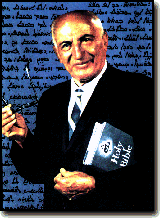 |
Dr. George M. Lamsa was the founder of the Aramaic Bible Society in 1943. He also translated the Aramaic Bible, known in the Middle East as the Peshitta, into the English language. Lamsa, a native Assyrian, was born on August 5, 1892.
|
As depicted in the movie “The Passion of the Christ,” Jesus and his disciples spoke in Aramaic.
Many believed Jesus spoke an ancient form of Aramaic that is not spoken today. The closest Aramaic to the biblical dialect is said to exist in only a few corners of the world.
Although most theologians agree that the apostles’ native tongue was Aramaic, they still say they wrote the New Testament texts in Greek in order to communicate to the emerging Greco-Roman establishment.
Dr. Rocco Errico is a near eastern theologian and Aramaic expert. He teaches from the Holy Bible, a translation from Aramaic to English by his mentor Dr. George Lamsa.
Lamsa was the first to translate the Aramaic Peshitta texts, which were discovered in Mesopotamia in the early 30s, after more than 18 centuries. His English translation, titled "The Holy Bible, From the Ancient Eastern Text (George M. Lamsa's Translation From the Aramaic of the Peshitta)” was published in 1957.
Lamsa was considered by many to be especially qualified for this scholarly work because of his command of both languages. He was raised in a part of northern Iraq where the mores and culture of the ancient Aramaic still exist. For this reason, Errico says, Lamsa was uniquely able to bridge the ancient with the modern for the purposes of understanding the idiomatic nuances and social variances of the ancient Aramaic and Hebrew world to the Westerner, unlike many other Aramaic scholars.
When asked why Errico would translate the bible from Aramaic to English instead of Greek or Hebrew, he said, “Neither Jesus, nor his immediate disciples, who were illiterate fishermen, nor his Galilean Followers, knew or spoke Greek. [Aramaic] was the language of Jesus and there are 12,000 differences [by translating from Greek and Hebrew]."
One example of these misinterpretations would be The Lord’s Prayer in the KJV, which reads “lead us not into temptation,” Enrrico points out.
Translated from the Aramaic, this reads very differently as, “do not let us enter into temptation." The difference, says Errico, is that God does not “lead us into temptation” but that one could ask for his guidance not to “enter” into temptation.
Likewise, says Errico, our lack of understanding of the ancient Hebrew and Aramaic, near eastern biblical culture has lead to thousands of misinterpretations of what was meant to be idiomatic and metaphoric (not necessarily historical) speech in original writings.
"The word Catholic means universal and so this was originally the universal bible," Errico says.
To understand this more clearly, one would have to study the origins of Christendom all the way back to before Christ and follow the developments of what is now the Roman Catholic Church.
Errico says one should reference the Near Eastern Chaldean Catholic groups and the Church of the East (Assyrians and also Catholic). The Chaldean group split from the Assyrian Catholic Church and joined up with Roman Catholics. Both Chaldean and Assyrian liturgy is all Aramaic and they teach from the Aramaic Bible today, as do many Roman Catholics in their liturgies.
Some early Christ followers broke off from the emerging Christian church and were marginalized.
Research shows the Targums and Jewish Palestinian and Babylonian Talmuds were written in Aramaic.
Above all, the Christian movement grew out of the womb of the Jewish faith.
Hebrew is a sister tongue to Aramaic --- much like the difference between Philadelphia English to Texan English.
Still, most western theologians insist the apostles wrote in the language of commerce of the first, second and third A.D.
L i n d a B a d a l o f |
 |
I'm just a phone call away!
24200 Magic Mountain Pkwy.,105, Valencia, California 91355
Direct Phone: (661) 287-3200 x3468 Cellular: (661) 645-4290
Email: LindaBadalof@SCVFineHomes.com
|
Dr. Brian Schmisek, professor at the University of Dallas, says Errico’s assertion that Lamsa’s bible is the “original Catholic bible” is wrong.
“Catholicism has always been one Holy, Apostolic church; the gospels were written by the apostles in Greek.”
Errico disputes this saying why would they translate from Greek when they had Aramaic and why did the New Testament include many Aramaic phraseology if the apostles weren’t speaking (and writing) in their native tongue?
“There is no original Aramaic version of the New Testament or original Aramaic version of the Bible because the New Testament was composed entirely in Greek," Schmesik rebuts.
Evidence shows Aramaic texts do go all the way back to the Targums; Hebrew translated to Aramaic, B.C.). Schmisek agrees "The Dead Sea Scrolls are the oldest biblical texts we have ... -- they are in Aramaic.“
Does this lead one to say biblical writers of the times were literate and documented much in Aramaic?
“Dr. Errico is using a translation of the Greek--an Aramaic translation of the Greek," Schmisek responds.
Errico says he used the ancient Peshitta texts, known to be at least as old as the Greek, as well as other ancient manuscripts.
But the real controversy comes in Errico's interpretations. He says Jesus was the son of man, the “Meshihah” (Messiah), a provincial prophet on a mission to teach God’s word, that he was a spiritual genius mighty in word and deed but Jesus was our savior but not our redeemer by the cross, which some say presents a real blow to western Christian belief.
In other words, says Errico, Jesus never ever spoke sacrificial language “first of all that word redemption and redeemer is incorrect, the Aramaic does not use that word."
Errico, in that refusal man crucified Jesus -- it was not God's plan. He says why would God be unwilling to sacrifice Abraham’s son and then decide to sacrifice his own?
Thus, Errico says the question is not who was Jesus but rather what was he about; what was his mission, "He didn't die for our sins, he died because of them."
Schmesik disagrees, saying “Jesus was crucified, died and on the third day rose again.”
But when pressed about the event as witnessed -- according to scripture -- Schmesik adds “Paul, who says he’s seen the Lord never gives us a description of it; the Gospel of Mark ends without a resurrection appearance … but it’s what Christians believe.”
“Our faith is based on the Apostles. In one sense, it’s not built on the faith of Jesus, it’s built on the faith of the Apostles. The Apostles preached to us about what Jesus did and said. If you don’t believe that, you’re not a Christian,” Schmesik continues.
Errico says that just means you would not be a “new thought” Christian.
Part of the problem is rooted in the fact that Jesus, after his crucifixion, was deified as Lord as a justification for his death; that Jesus didn't become Lord in a liturgical sense until about the 1st century A.D.
Errico says Christians (mostly Jewish Christ followers) had to try and explain why the son of man or the son of God died in such a way. Old Hebrew tradition regularly used blood sacrifice and this would’ve made sense as an explanation for Jesus’ death for the atonement of our sins, but that Jesus never said that.
“His message was not the cross. His message was the kingdom of God coming here and now."
Errico adds there is no heaven or hell in the Western sense of the two being specific places in the universe. Hell is an Aramaic idiom that means mental torment -- when you do something wrong you suffer for it.
So the question becomes: how does one suffer for it? What then, is the great reward of being saved?
Errico says: "The reward is here not when you die. God doesn't reward, God doesn't punish. He (Jesus) did save us, but he saved us by his teachings and if we don’t follow his teachings you’re not saved at all.”
For a complete understanding of Errico’s work and teachings, visit his website for the Noohra Foundation, which he began in 1970 to continue Lamsa’s work after he died in 1975.
Errico has since published 10 books in the U.S., two in Germany and one in Italy. His most recent book, “Aramaic Light on Galatinans Trough Hebrews (A commentary Based on Aramaic, the Language of Jesus and Ancient Near Eastern Customs)” was published in 2005. His newest work, "Aramaic Light on James Through Revelation" should be published this fall.
Errico's works have been derived by Lamsa's work, the Peshitta manuscripts and an assortment of other source materials from various museums including the Smithsonian and the Vatican Library.
Although books and materials can be purchased through various religious institutions such as Unity Church, all of the Lamsa/Errico materials including CDs, DVDs and books are sold through the Noohra Foundation.
Errico continues to lecture for colleges, civic groups and churches across the world and was recently inducted into the Collegium of Scholars at Morehouse College.
|
|
Thank You
The following individuals contributed to the publication of this issue:
|
| Alan Aldawood |
California |
| Fred Aprim |
California |
| Dr. Matay Beth Arsan |
Holland |
| Fr. George Bet Rasho |
California |
| Mazin Enwiya |
Chicago |
| Nahrain E. Kamber |
California |
| Pnoel Shamun |
California |
| William Warda |
California |
|
ZINDA Magazine is published weekly. Views expressed in ZINDA do not necessarily represent those of the ZINDA editors, or any of our associated staff. This publication reserves the right, at its sole discretion, not to publish comments or articles previously printed in or submitted to other journals. ZINDA reserves the right to publish and republish your submission in any form or medium. All letters and messages require the name(s) of sender and/or author. All messages published in the SURFS UP! section must be in 500 words or less and bear the name of the author(s). Distribution of material featured in ZINDA is not restricted, but permission from ZINDA is required. This service is meant for the exchange of information, analyses and news. Any material published in Zinda Magazine will not be removed later at the request of the sender. For free subscription to Zinda Magazine, send e-mail with your name, address, telephone number to: zcrew@zindamagazine.com.
ZINDA means "Spark of Fire" in modern Syriac (Assyrian); Zinda's Red Swoosh is a rendering of the seventh letter in the Assyrian alphabet, letter ZEN, and the first letter in the word "Zinda". For more information about the Assyrian culture and heritage write to Zinda Magazine.
Zinda Magazine™ Copyright © Zinda Inc., 1994-2006 - All Rights Reserved - www.zindamagazine.com |







